Konye - Urgench -
Turkmenistan - 2013
In May 2013 we went on a 33-day, "5-Stans", Central Asia tour.
(Melbourne - Kuala Lumpur - Kazakhstan - Kyrzgystan - Uzbekistan - Tajikistan - Turkmenistan - Dubai - Melbourne)
Turkmenistan was the last of the "5-Stans" on this tour.
It took about an hour to travel from Khiva in Uzbekistan to the Turkmenistan border.
We said goodbye to Rustum, our guide in Uzbekistan.
An Italian couple and their daughter were crossing also. Their guide helped to expedite our exit from Uzbekistan.
The Uzbek border guards are very concerned about what money you take in and out of the country.
Then it was about a kilometre in a very crowded van to the Turkmenistan gate.
Fortunately, our Turkmenistan guide, Rustum (yes, another Rustum) met us.
He already had our entry forms filled out and was able to epedite our entry.
Even so the whole border crossings took about 2 hours.
We had about a 90-minute through the Kara-Kum desert to Konye-Urgench.
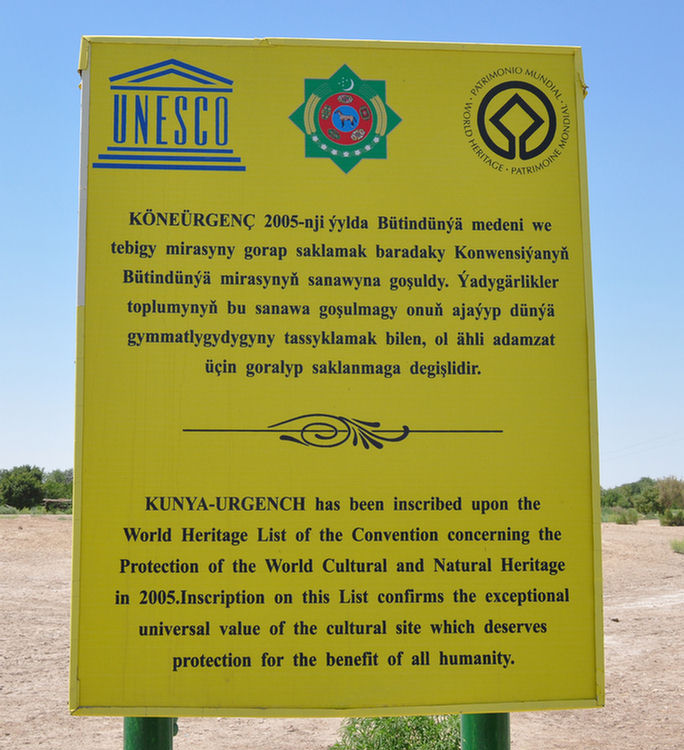
The 12th and early 13th centuries were the golden age of Urgench,
it became the capital of Khorezm Empire and surpassed in population and fame all other Central Asian cities barring Bukhara.
The ancient city of Urgench was one of the great Silk Road cities and was the centre of the Islamic world until
Mohammed II moved his capital to Samarkand after capturing the city in 1210.
Gengis Khan arrived in 1222 seeking revenge for the murder of his envoys in Otrar.
He diverted the Amu Darya river, eventually flooding the city and drowning the inhabitants.
The city was revived after Genghis's assault, but the sudden change of Amu-Darya's course to the north
and the town's destruction again in the 1388, this time by Timur, forced the inhabitants to leave the site forever.
Timur considered the city to be a rival of Samarkand.
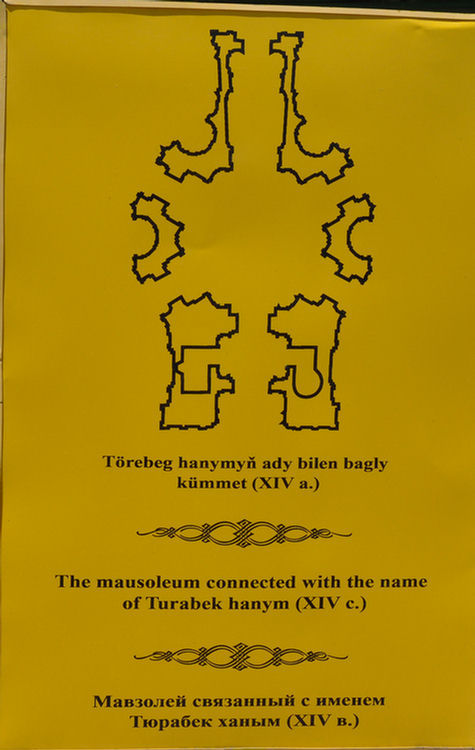
The remains of the Mausoleum of Turabek Khanum.
This was considered to be one of Asia's most perfect buildings.
It had 365 sections on the sparkling mosaic on the underside of the dome,
24 pointed arches, 12 bigger arches and 4 big windows.
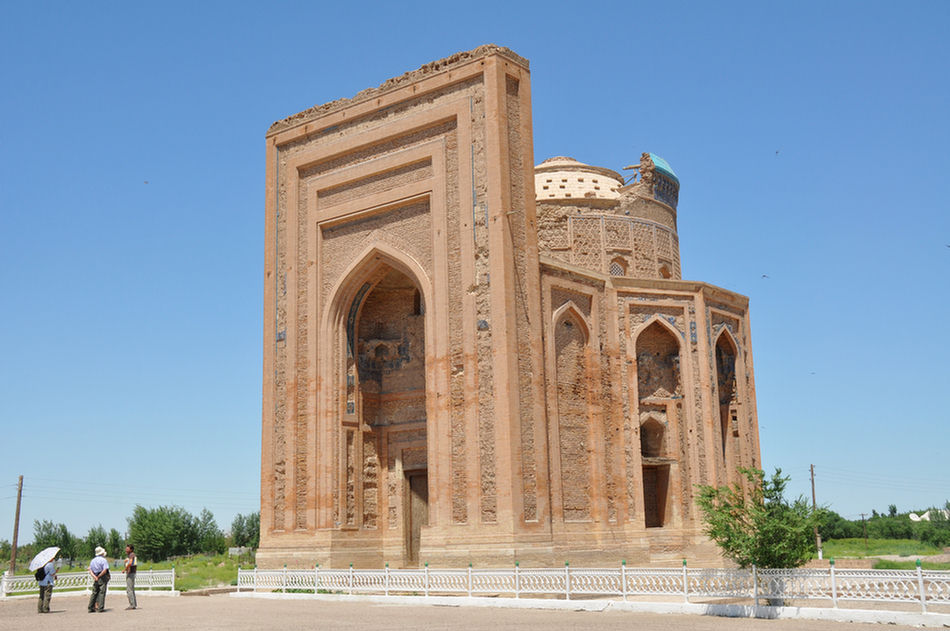
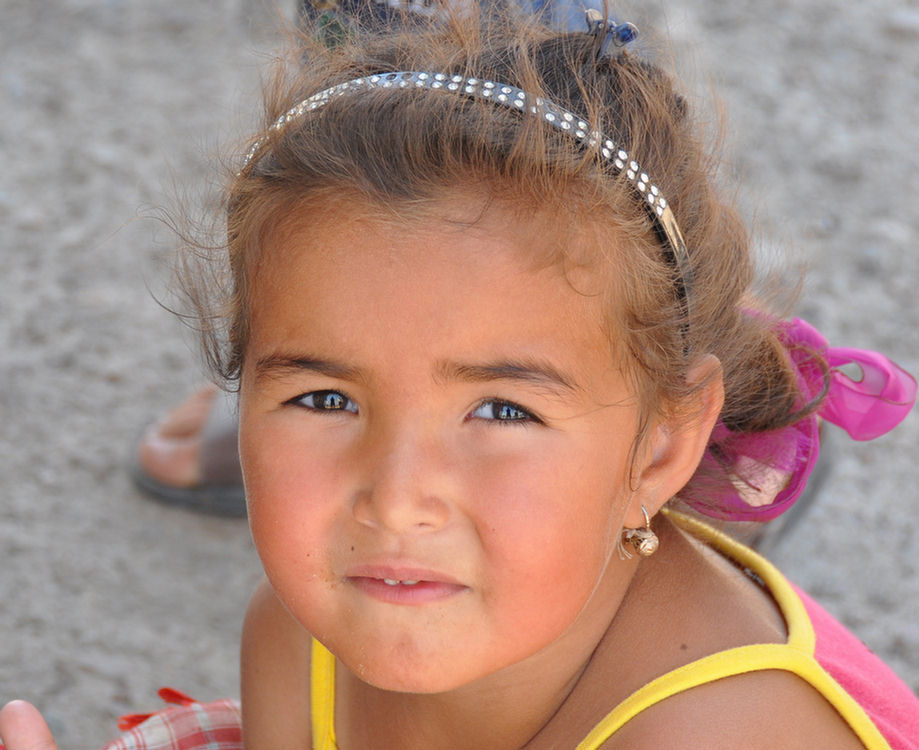
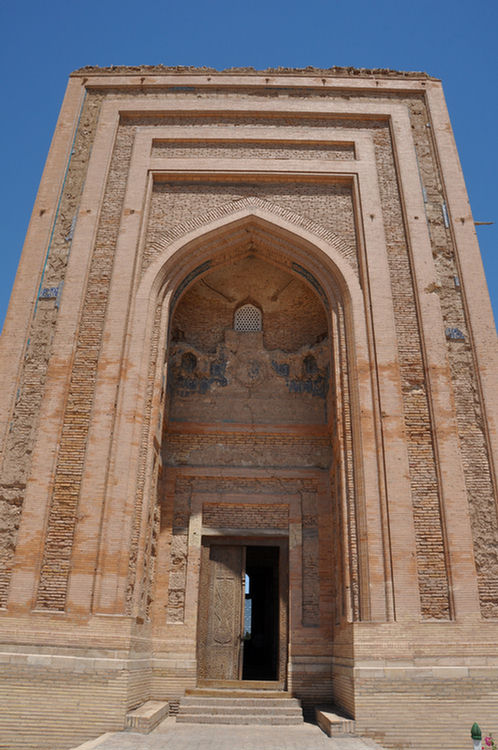
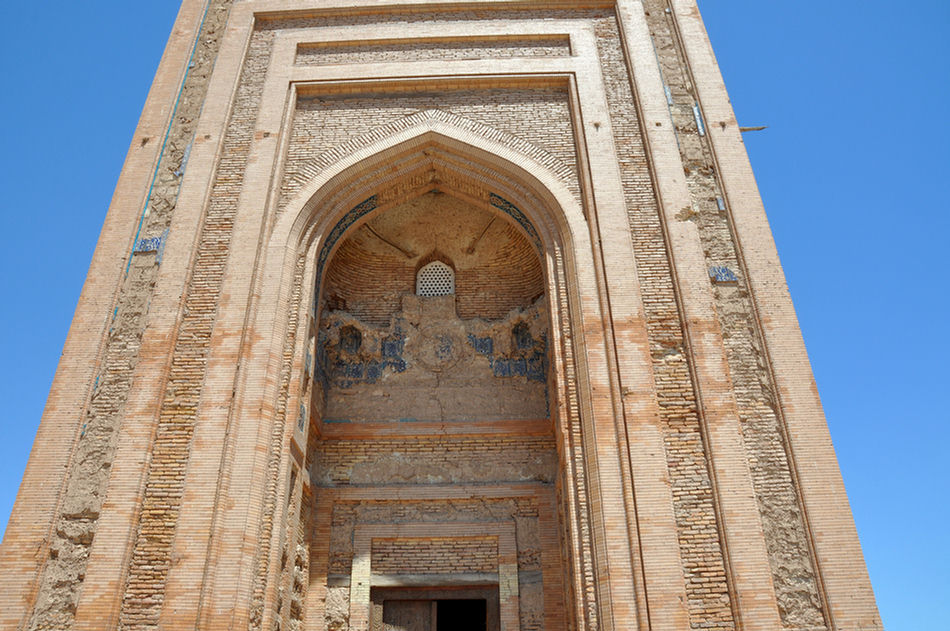
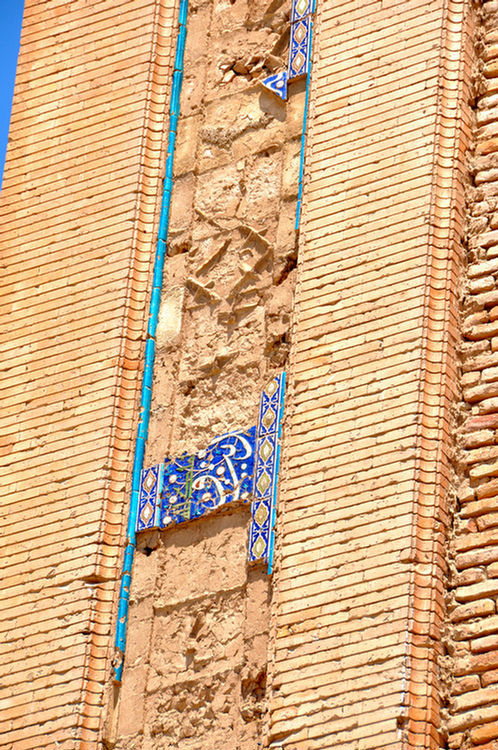
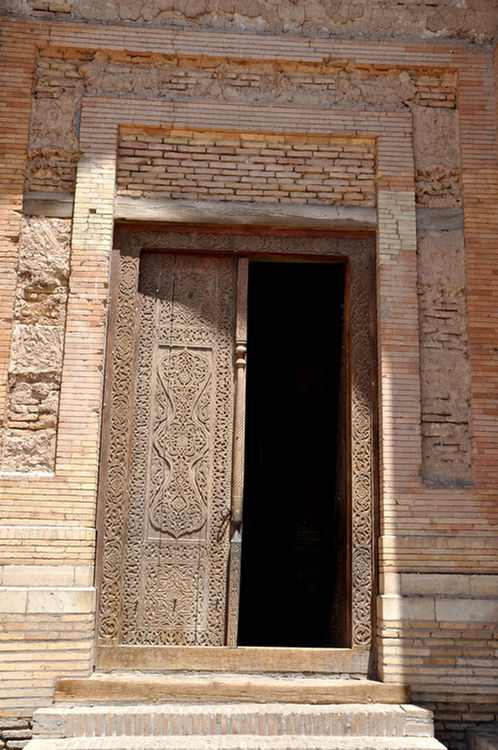
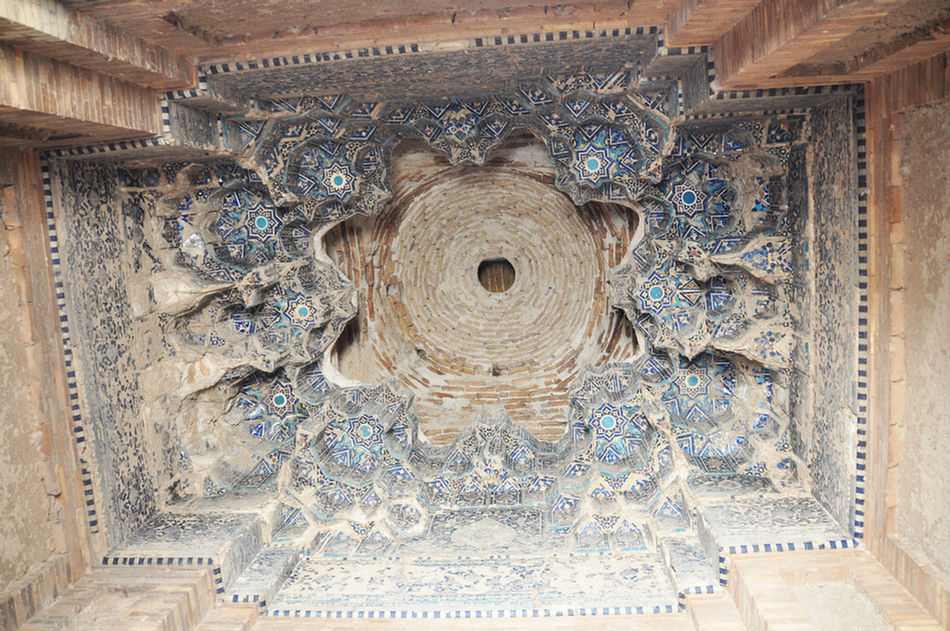
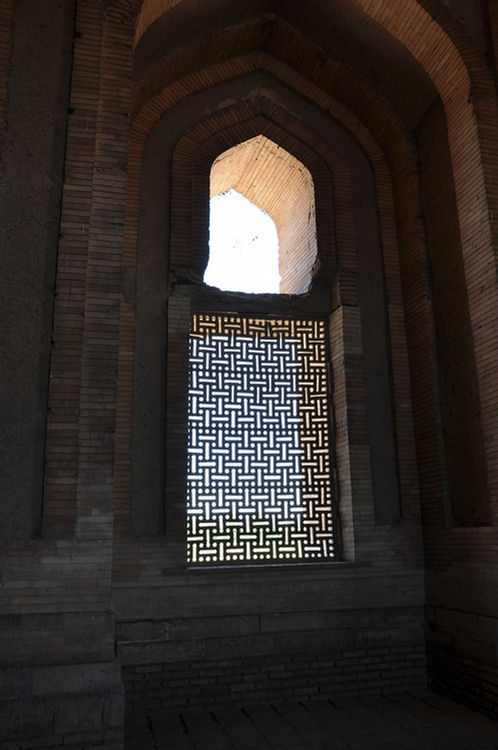
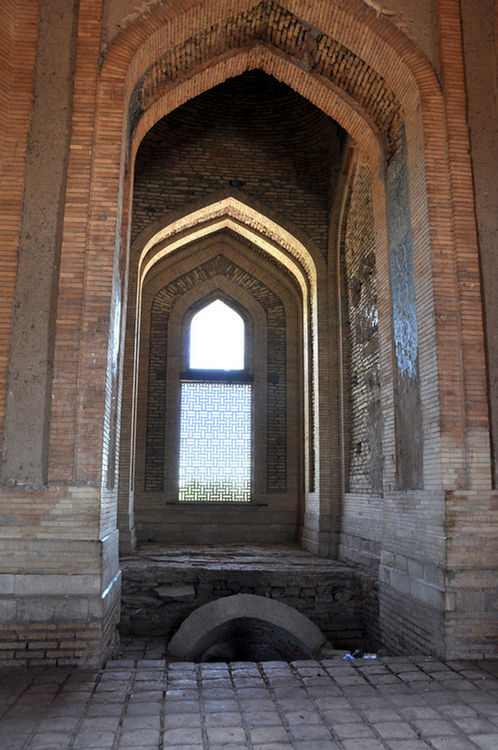
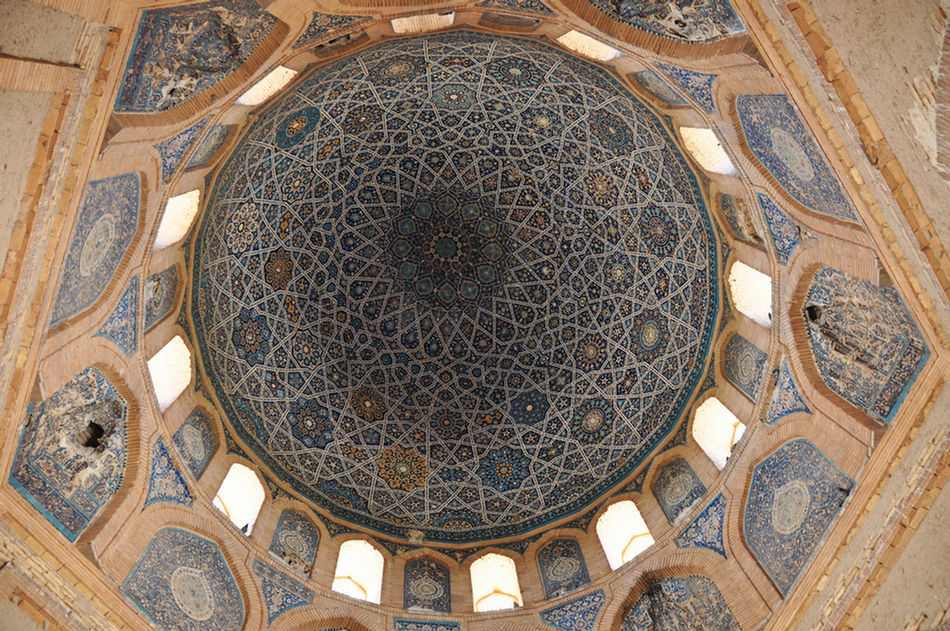
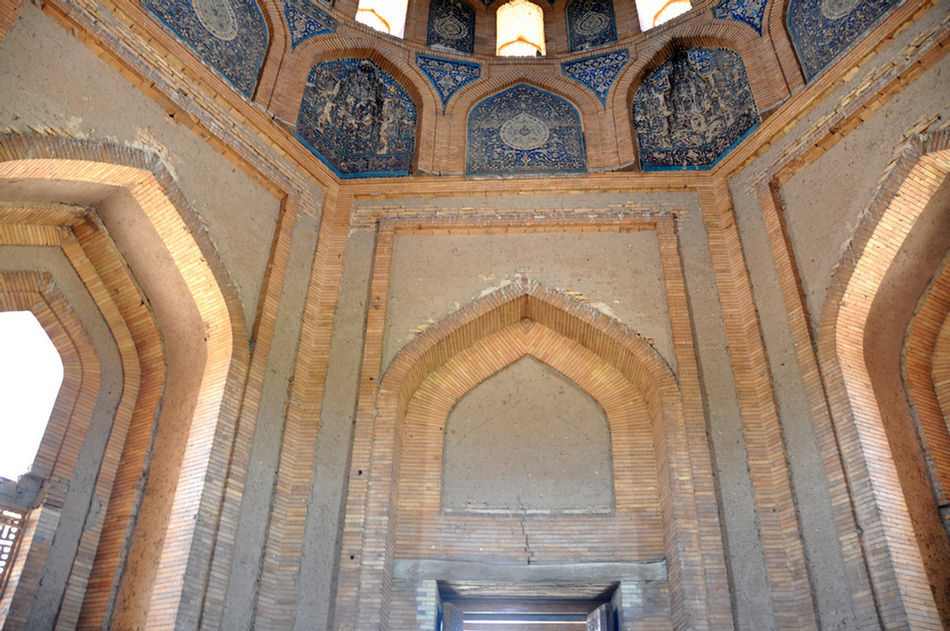
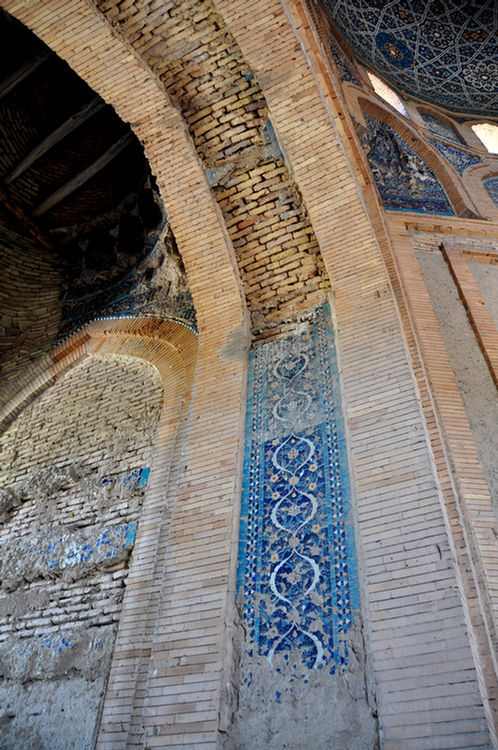
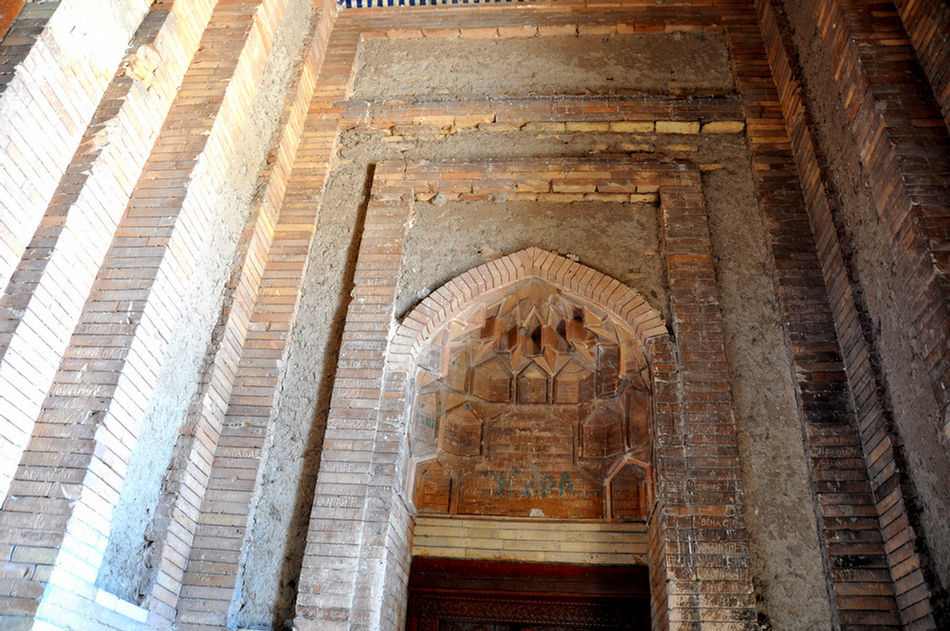


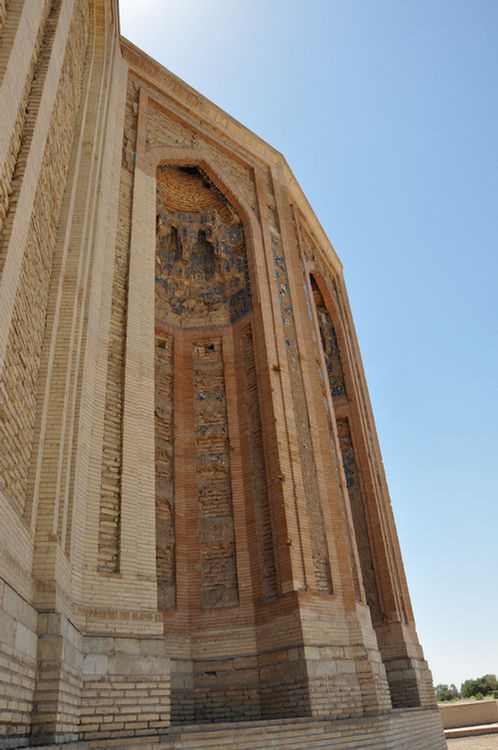
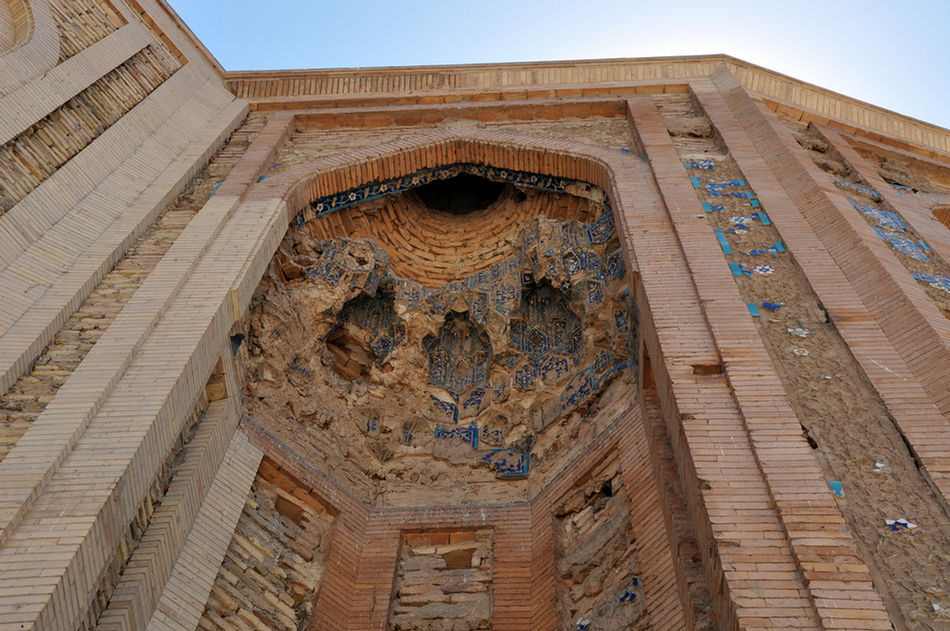
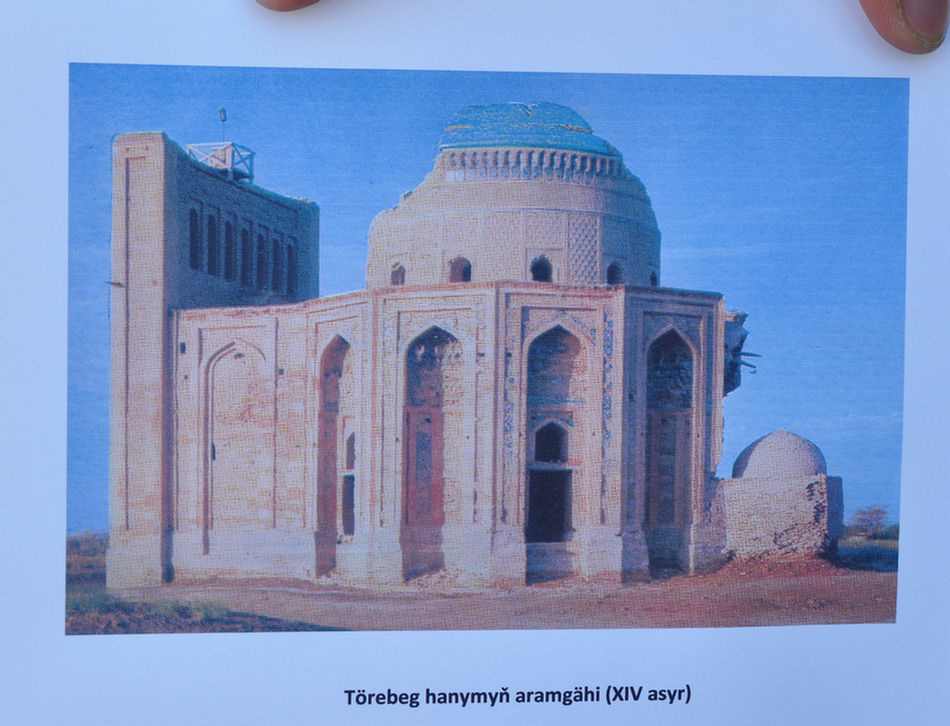
The 19th century Sayid Ahmed Mausoleum was across the road.
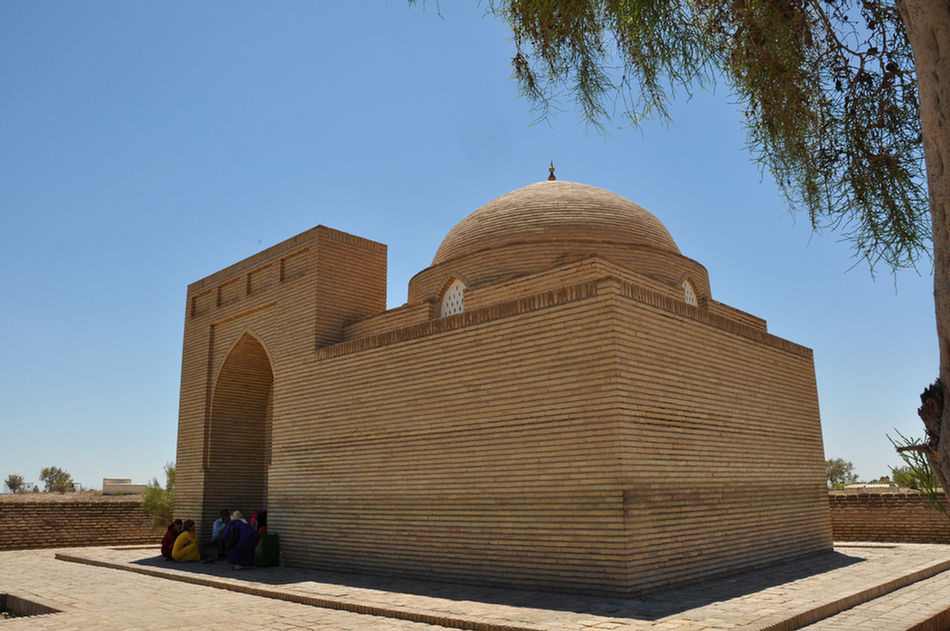
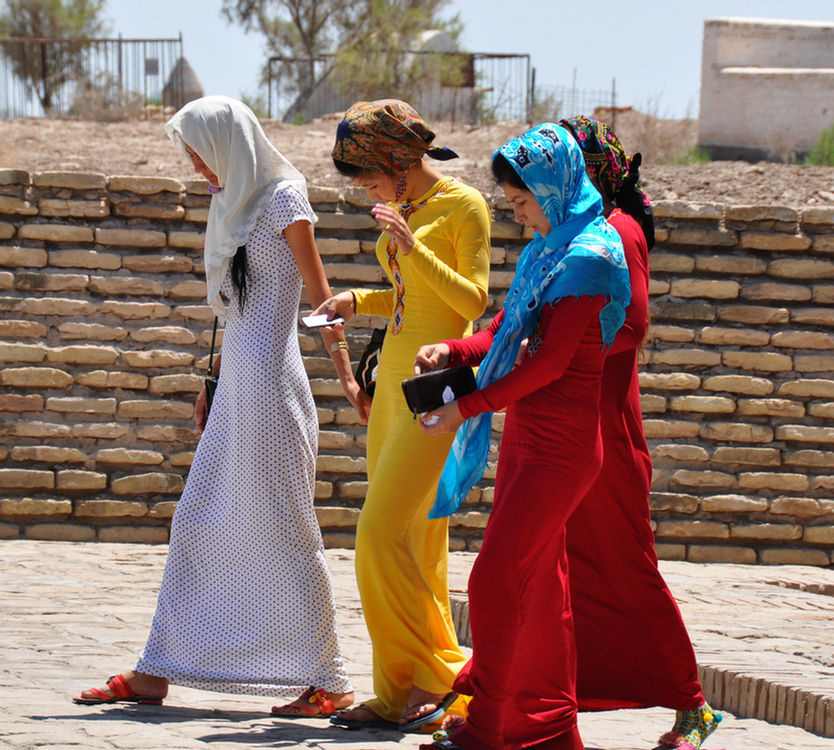
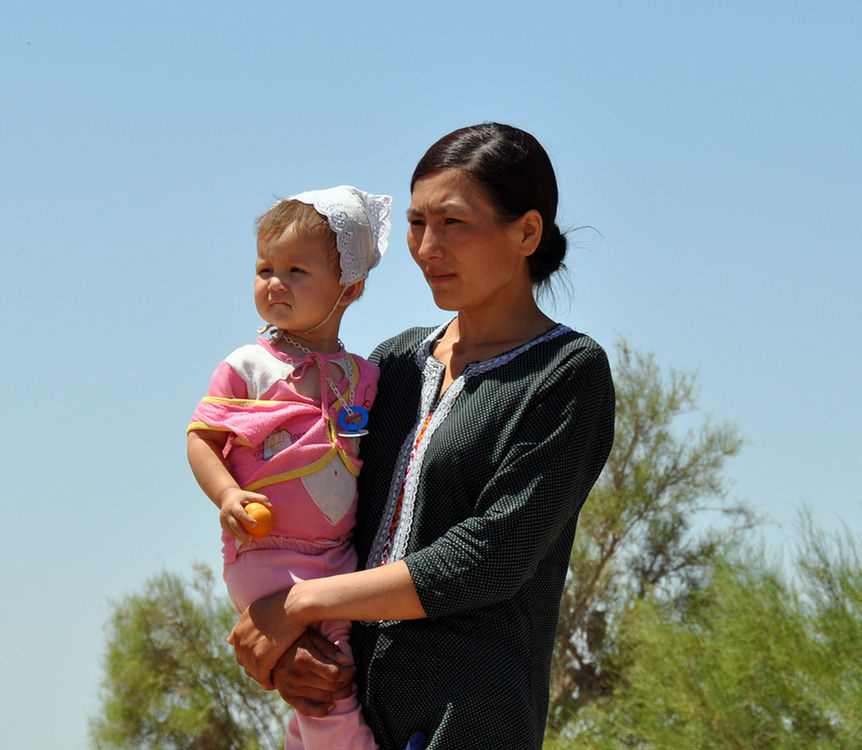
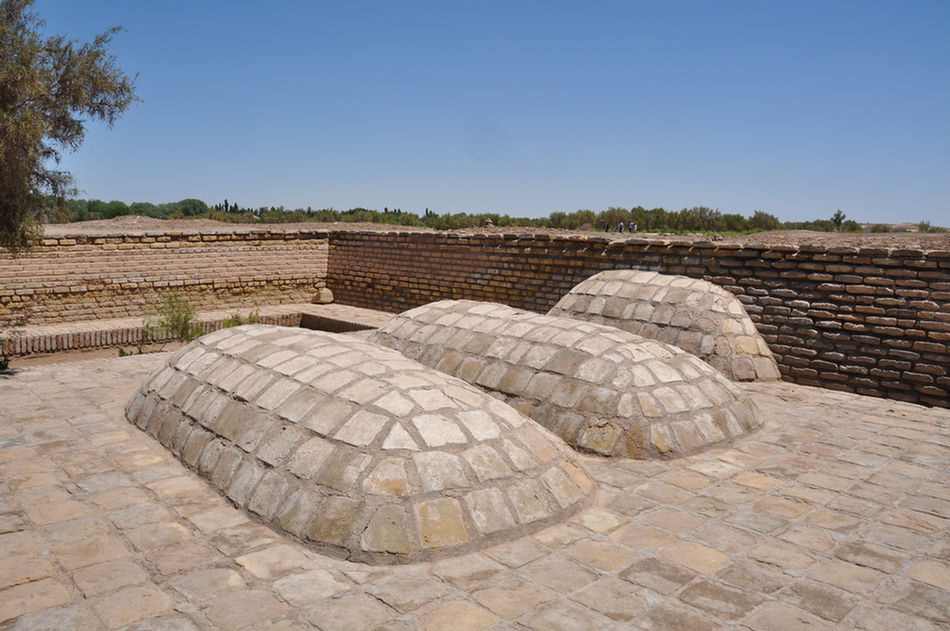

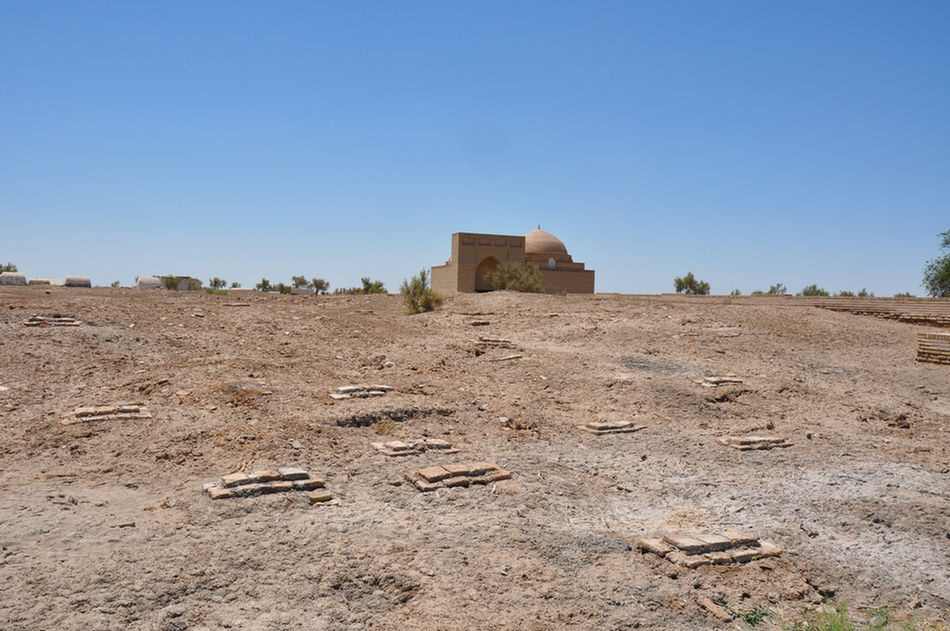
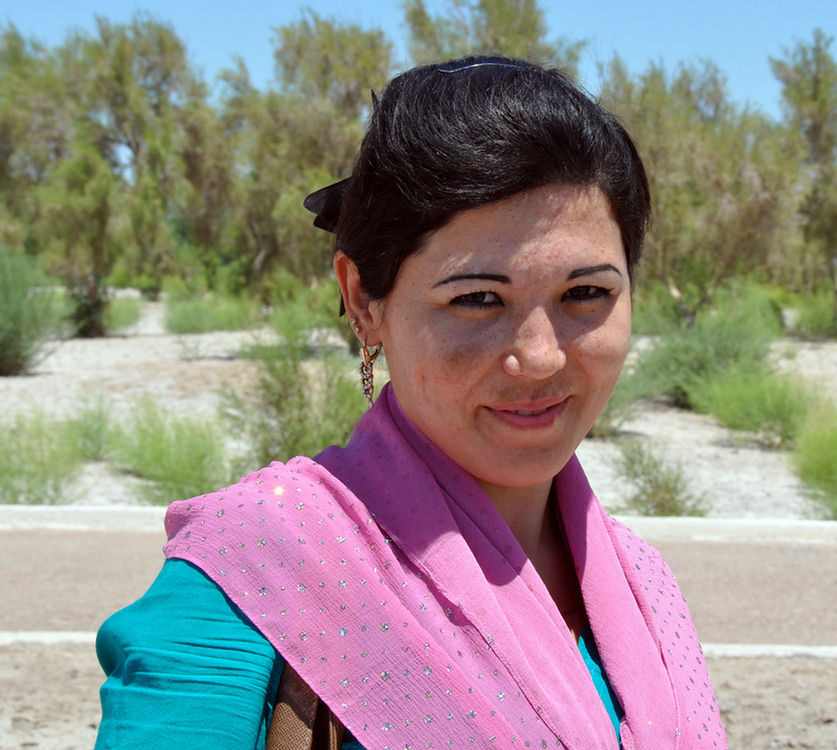
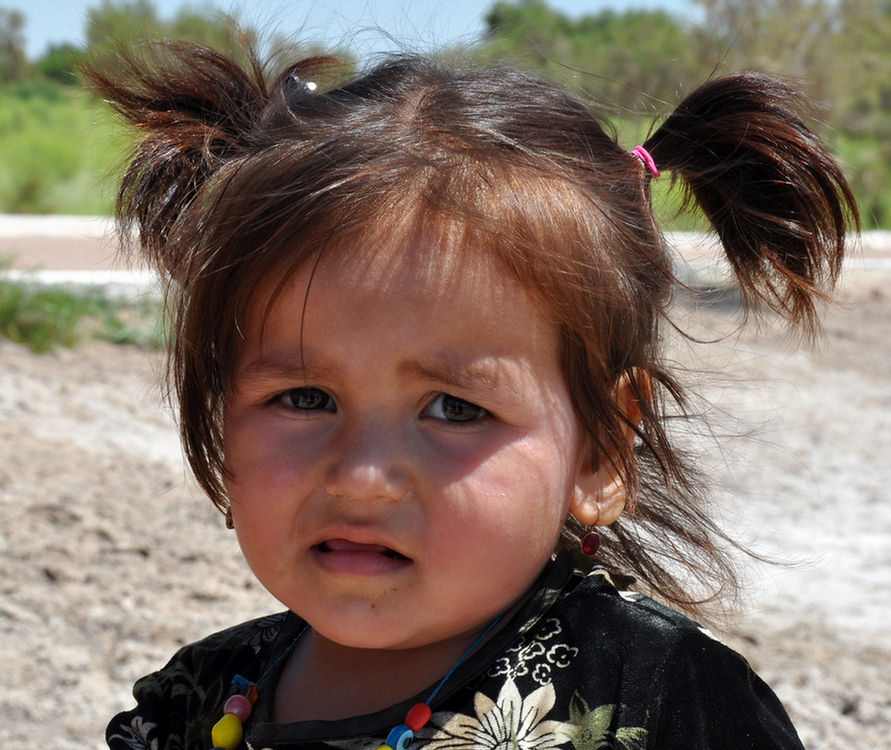
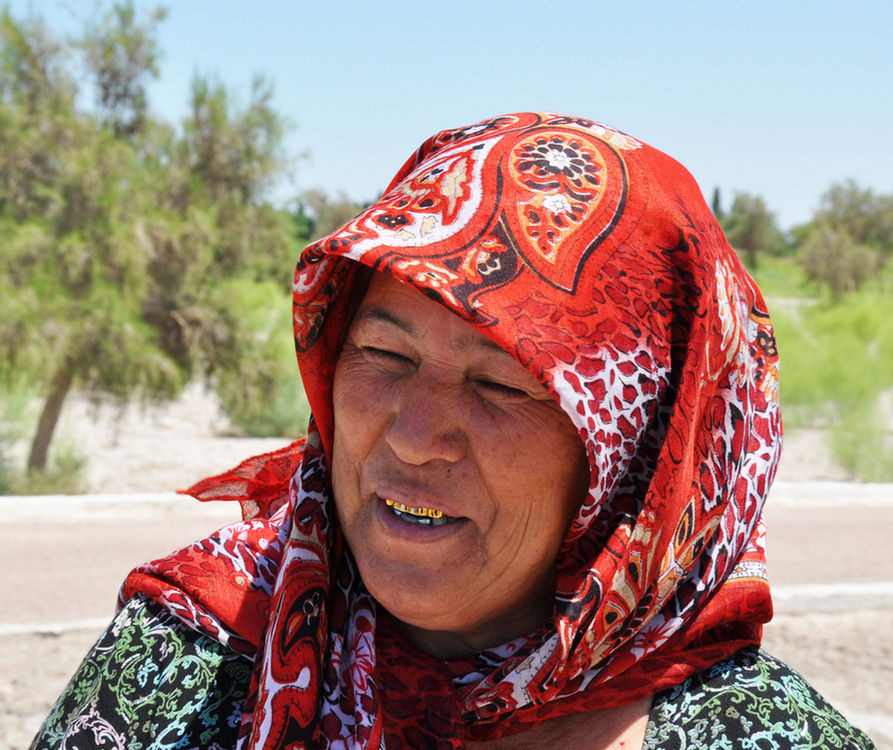
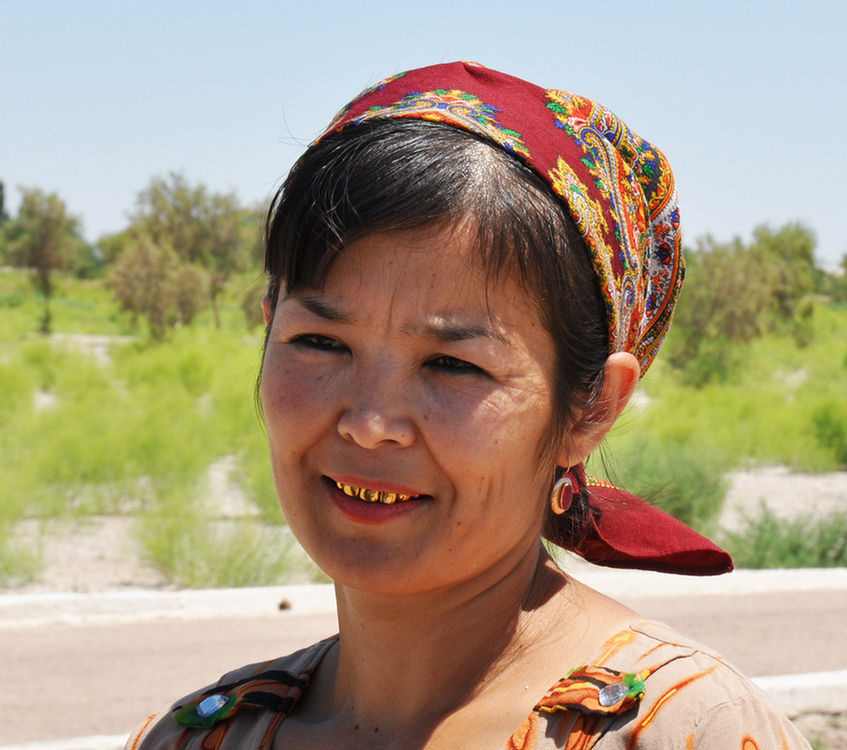
Kutlug Timur minaret.
Completed in the 1320's, it is 68 metres high.
It leans noticably and is the only surviving part of old Urgench's main mosque.

While it appears unattractive from a distance, it is built with intricate brickwork.
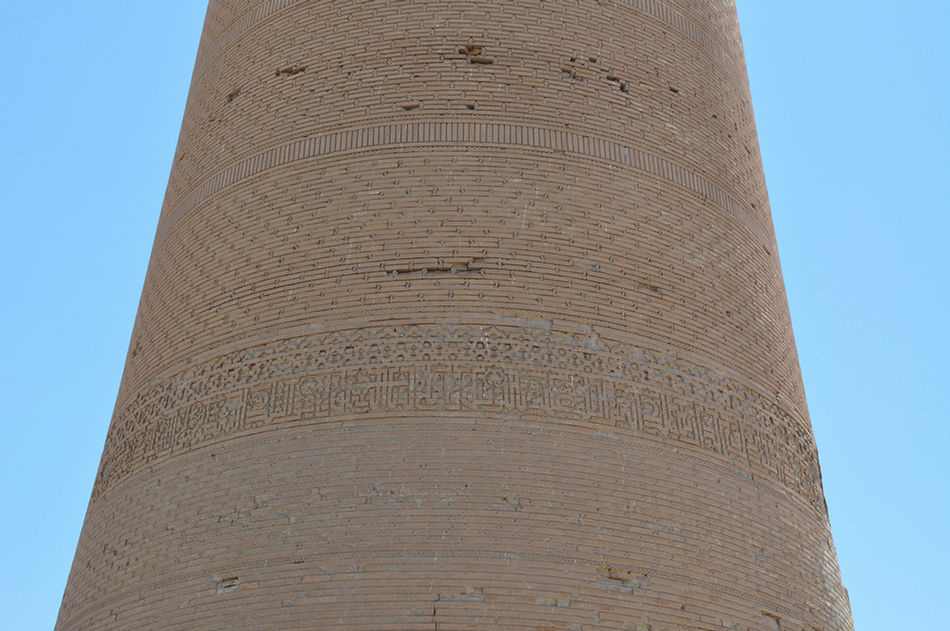
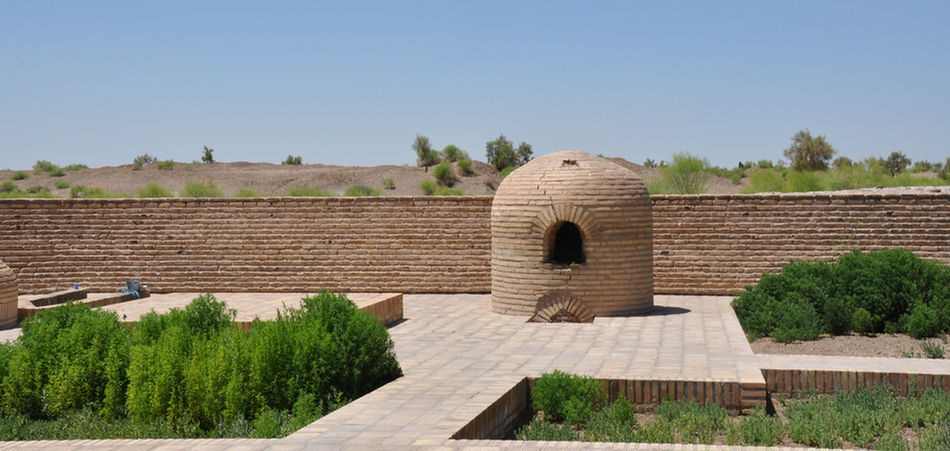
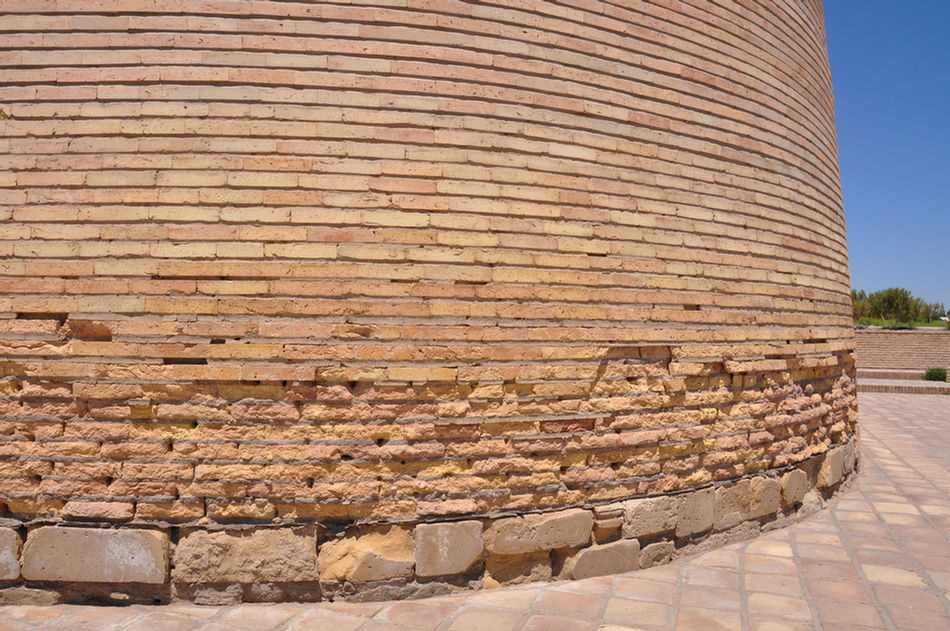
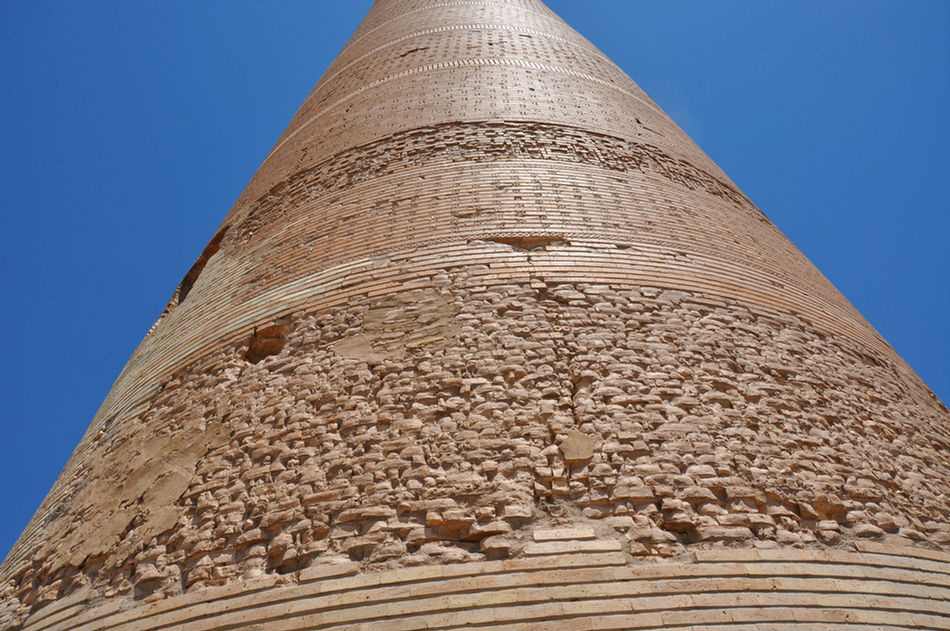
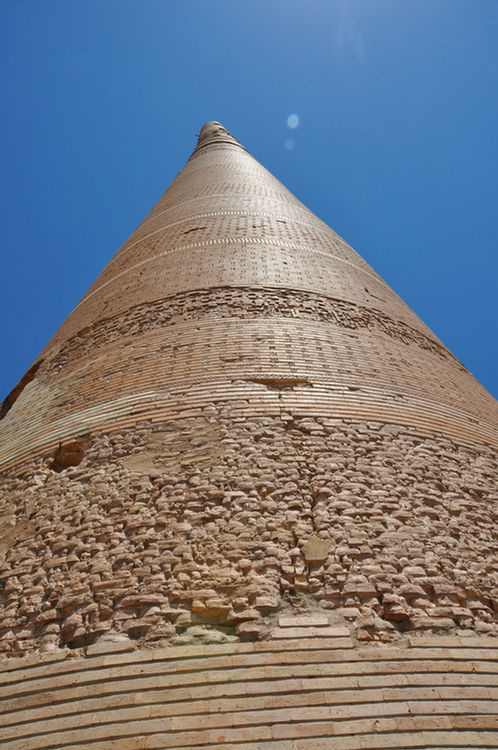
Sultan Tekesk Mausoleum.
Tekesh was the 12th century Khorezm Shah who made Khorezm great with conquests
as far as present day northern Iranand northern Afghanistan.
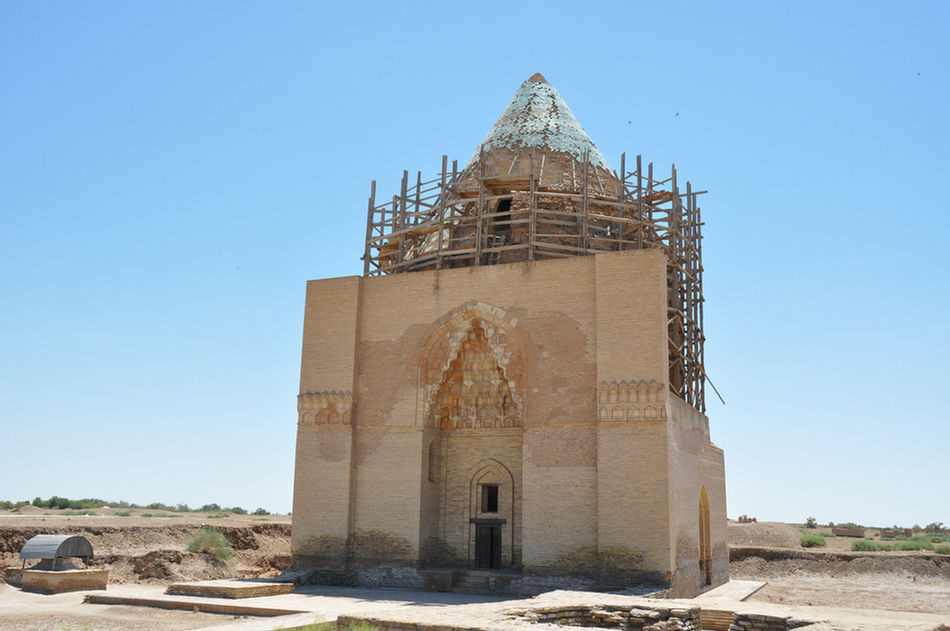
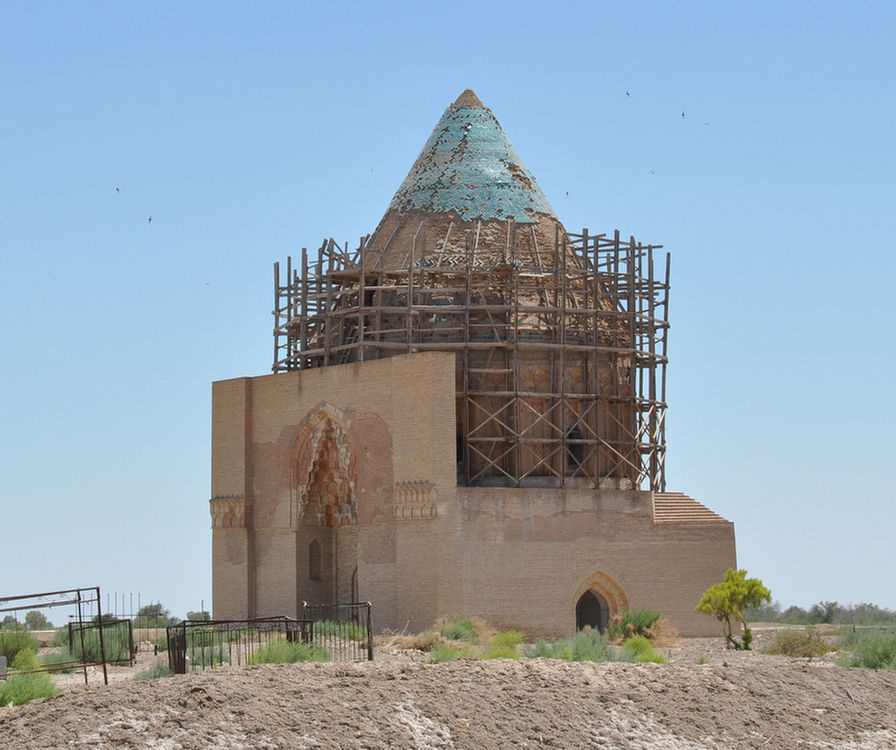
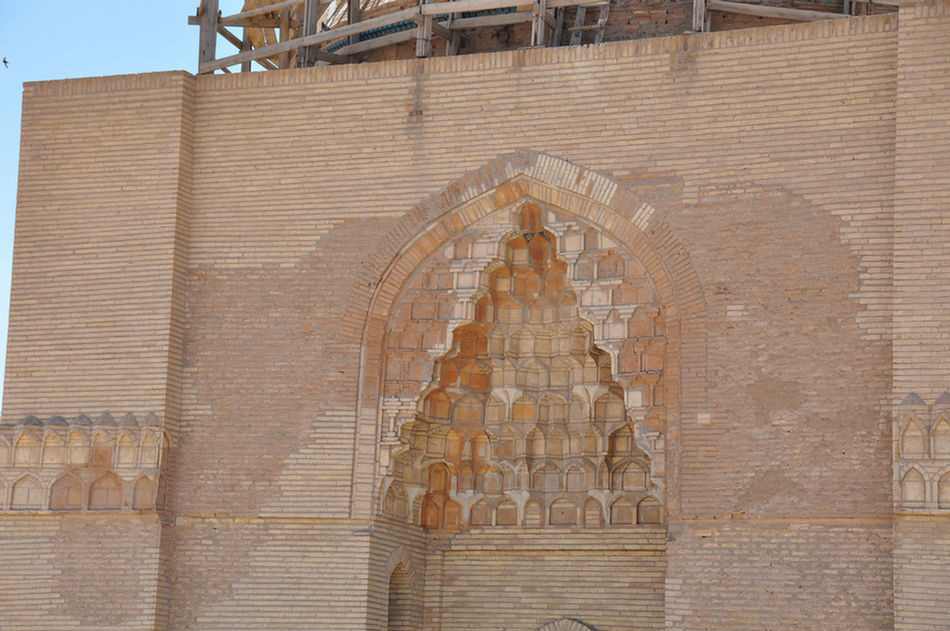
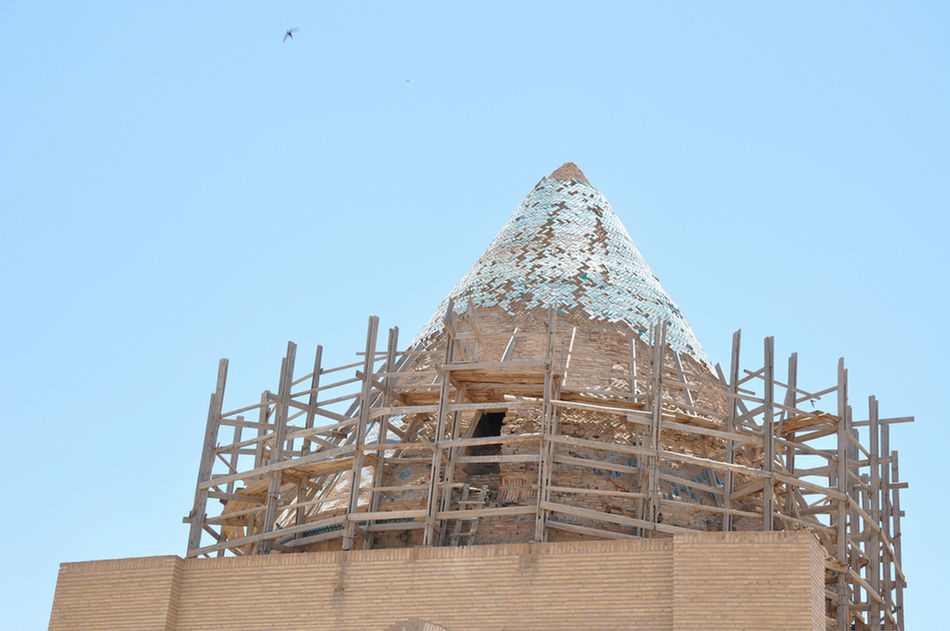
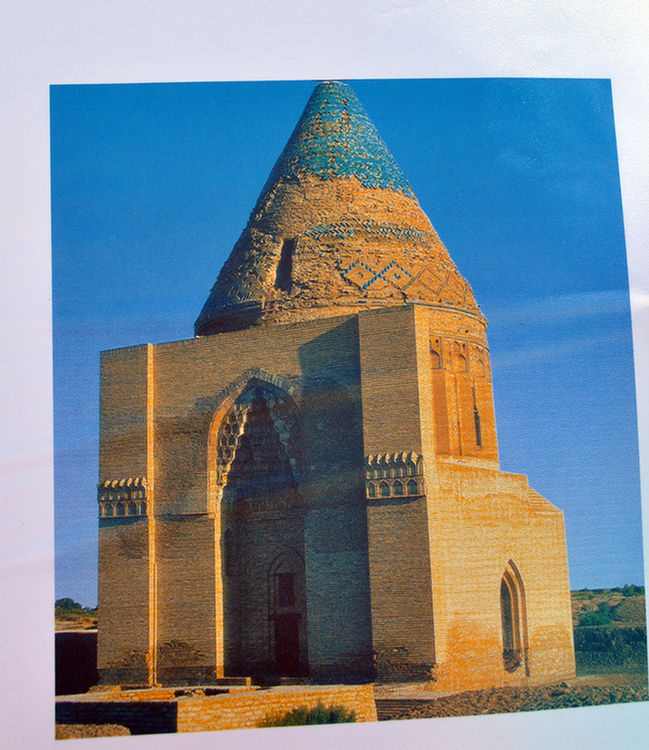
Alow Pir mausoleum.
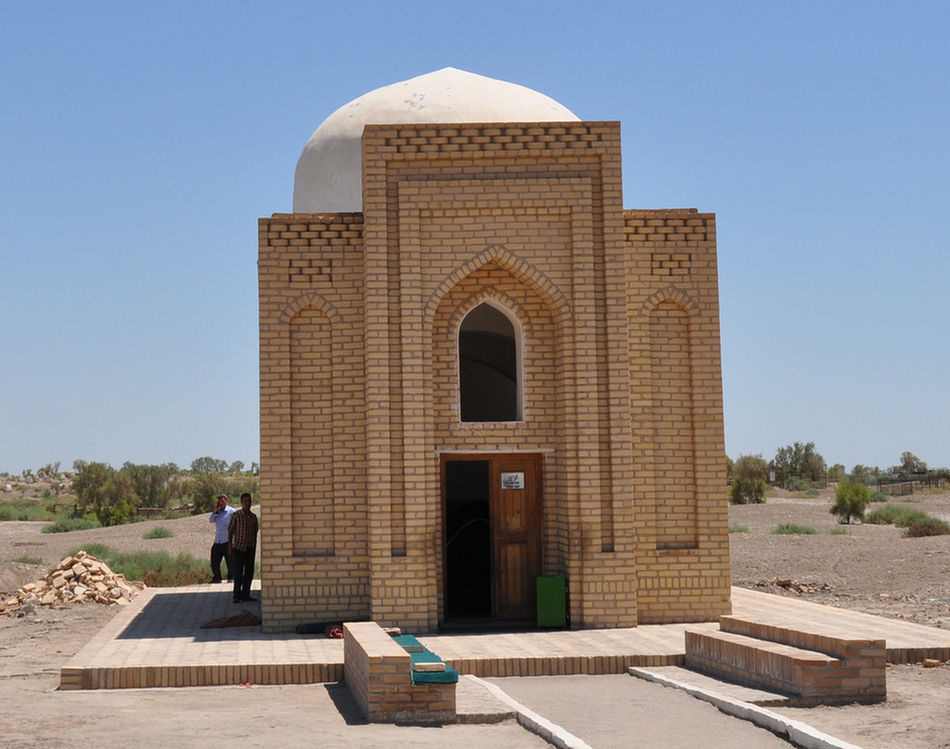
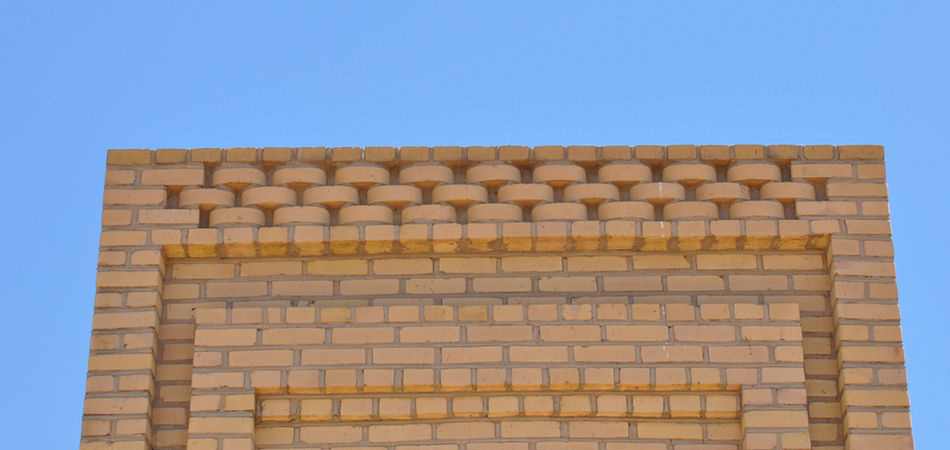
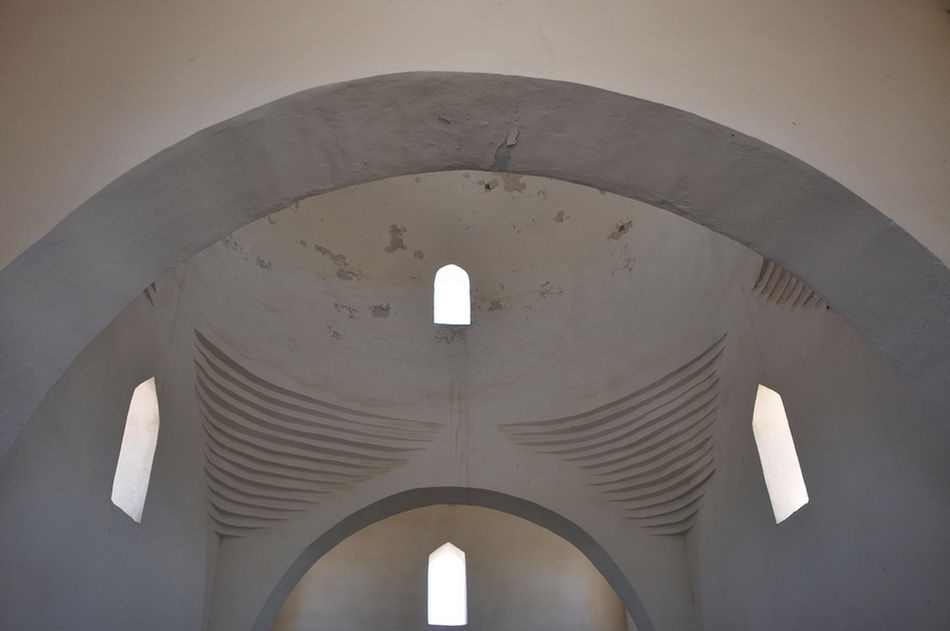
Kyrk Molla hill ( 40 Mullahs hill).
This is a sacred place where Konye-Urgench's inhabitants held their last stand against Genghis Khan's Mongols.
Young women roll down the hill as a fertility rite, hoping their wishes come true.
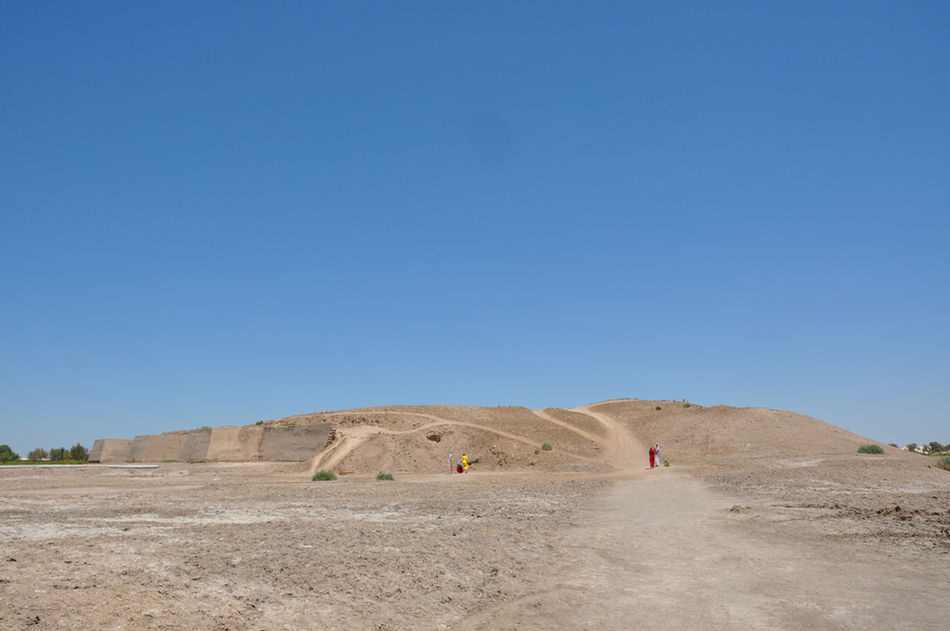
We did see some young women walking round and round a pole.
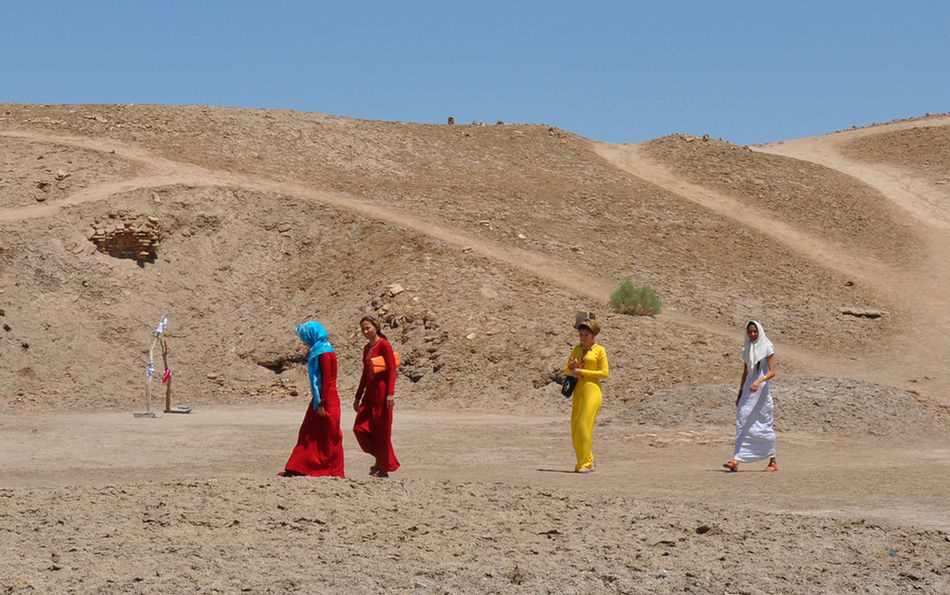
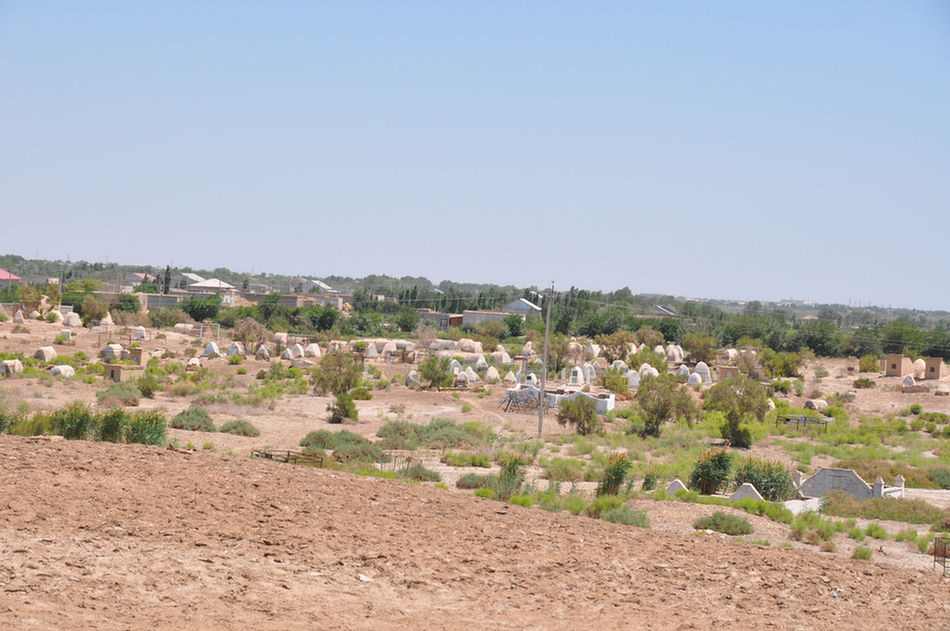

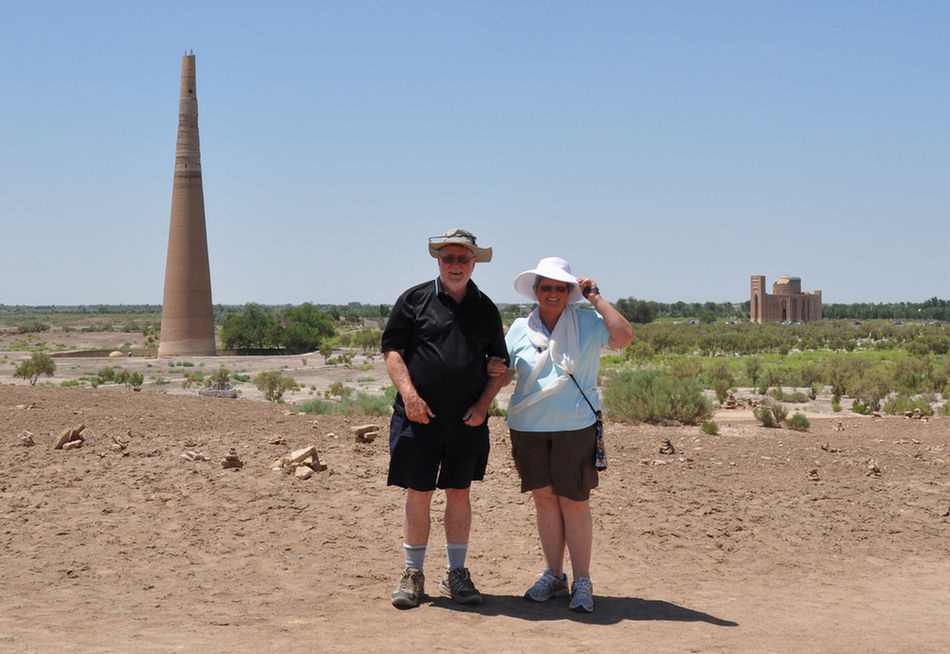
Il-Arslan Mausoleum.
Its conical dome with its 12 faces is unique.
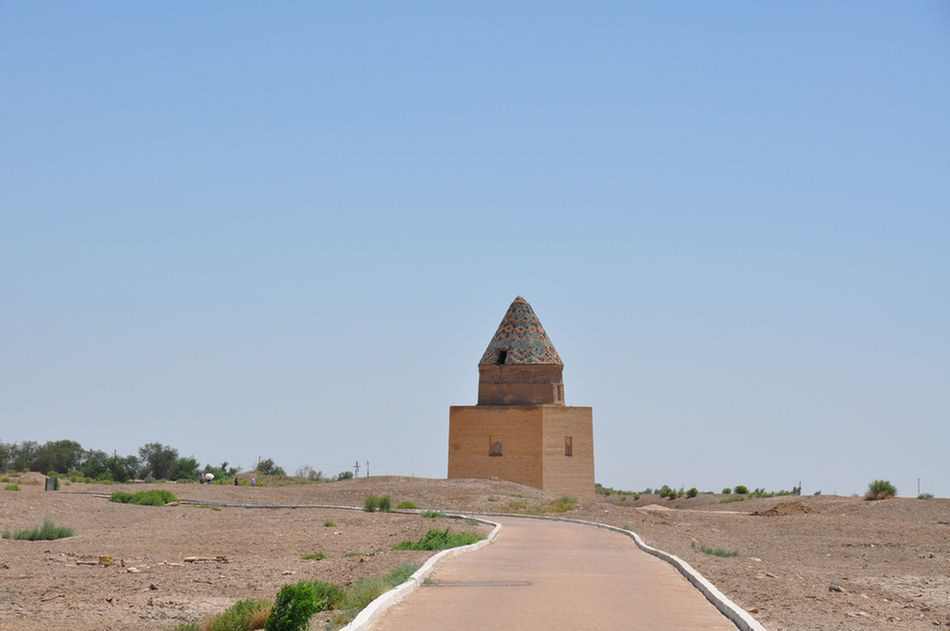
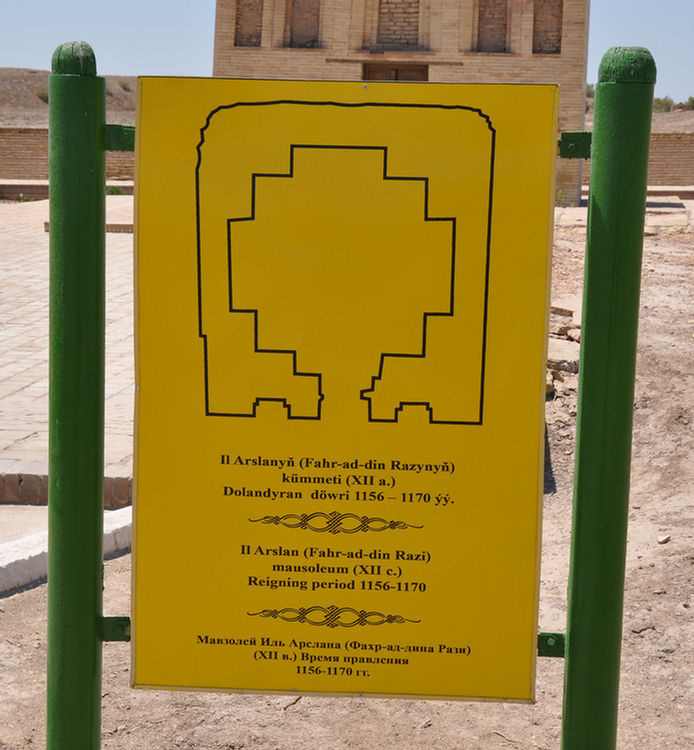
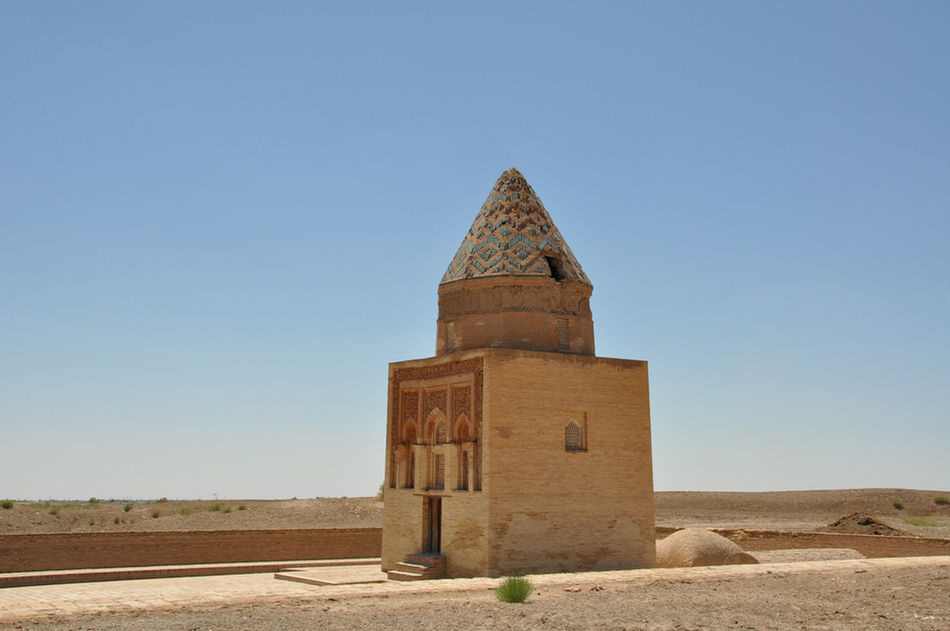
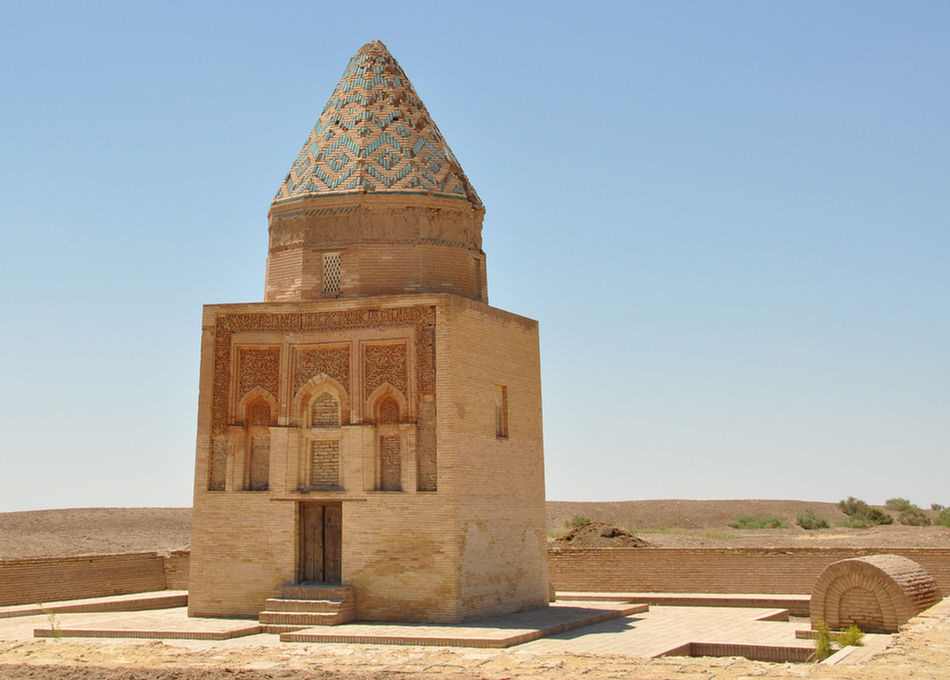
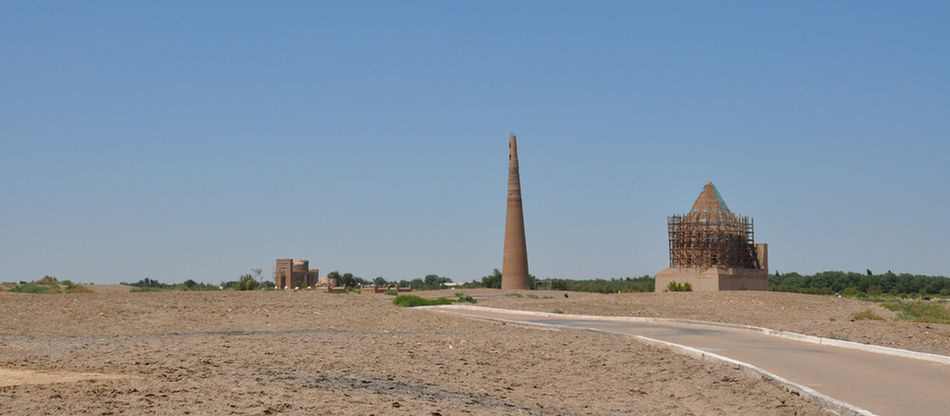
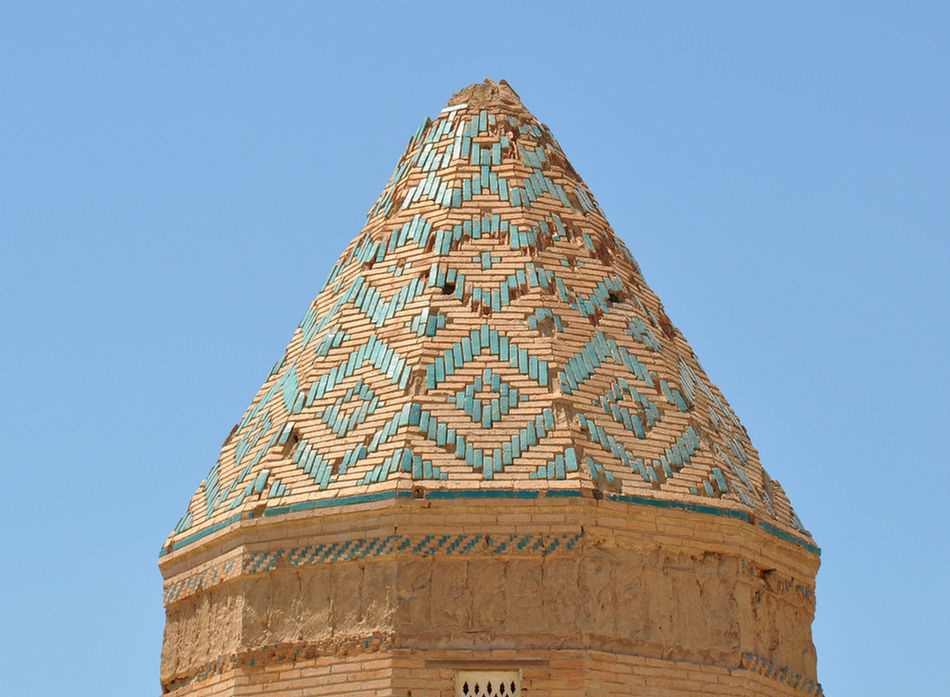
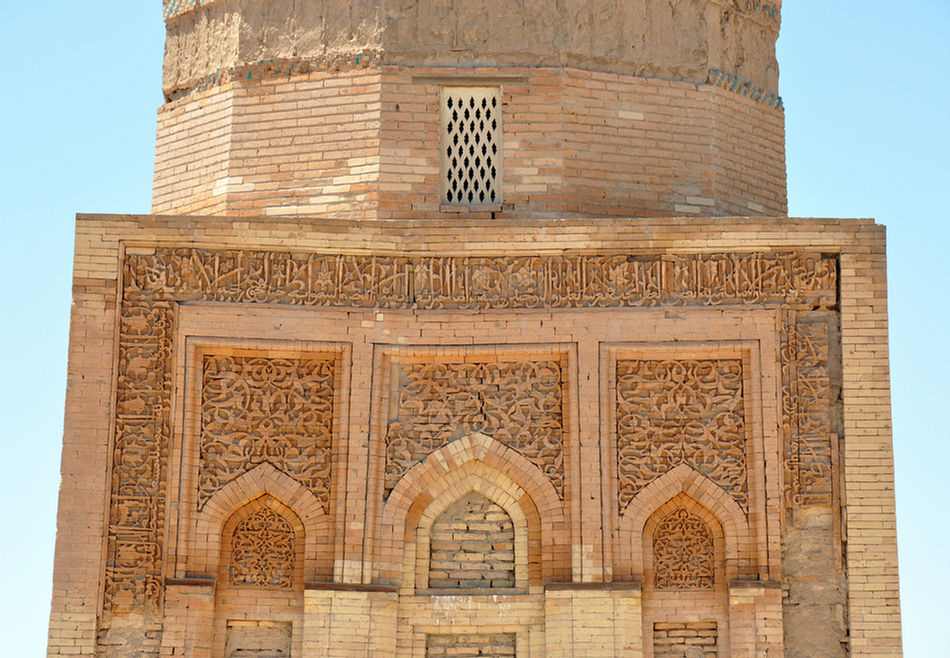
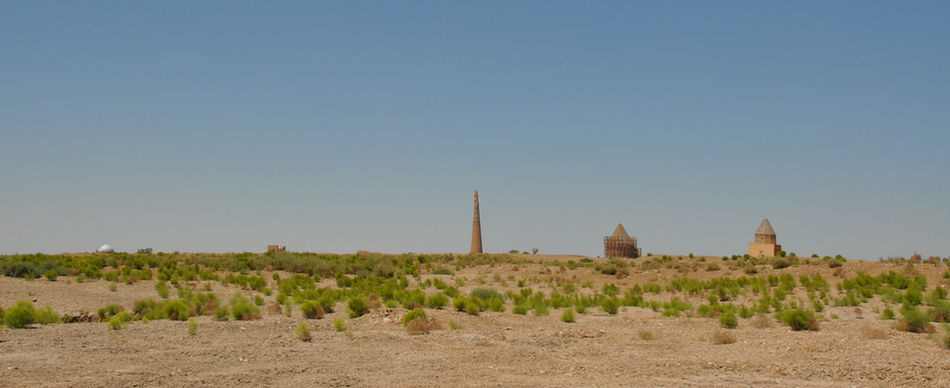
Mamuu II minaret.
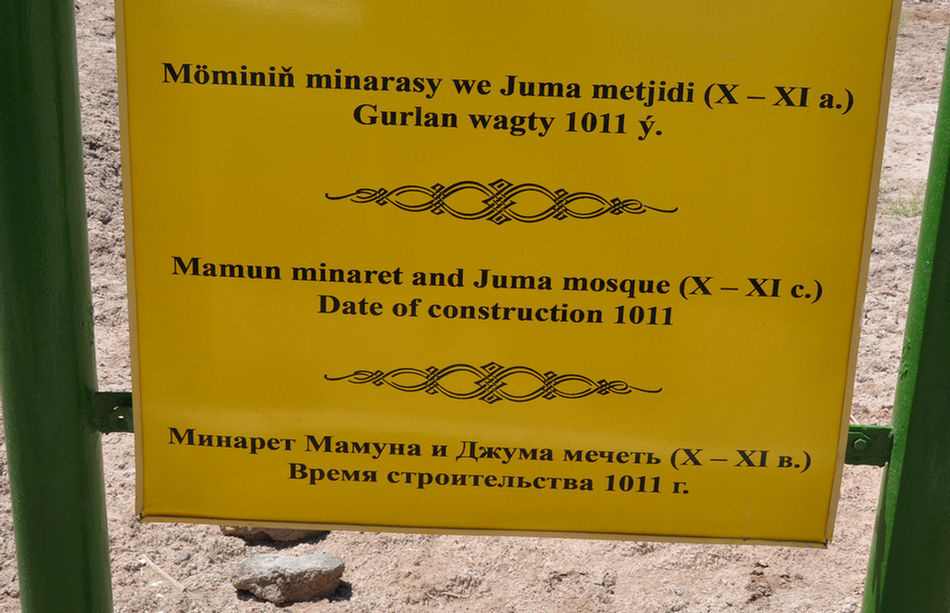
It was built in 1011, reduced to a stump by the Mongols in 1221, rebuilt in the 14th century
and finally toppled by an earthquake in 1895.
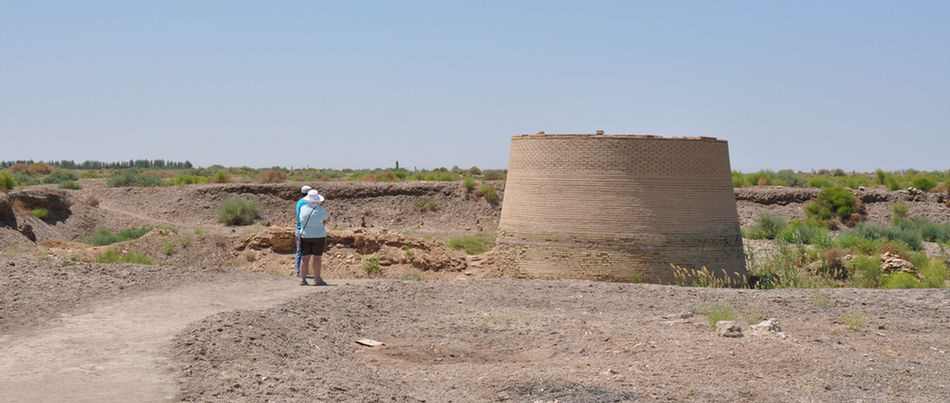
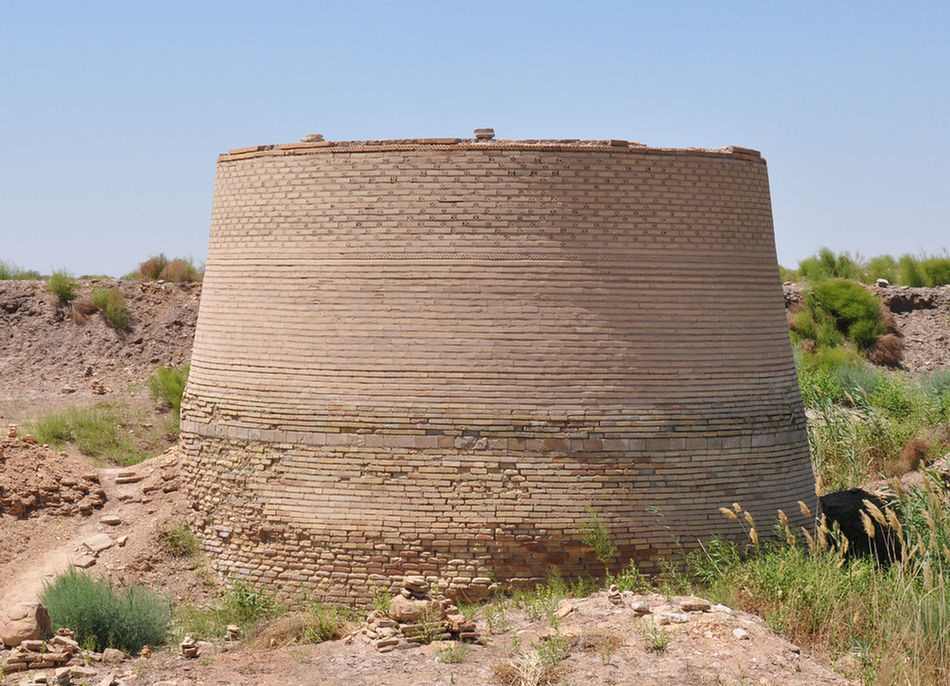
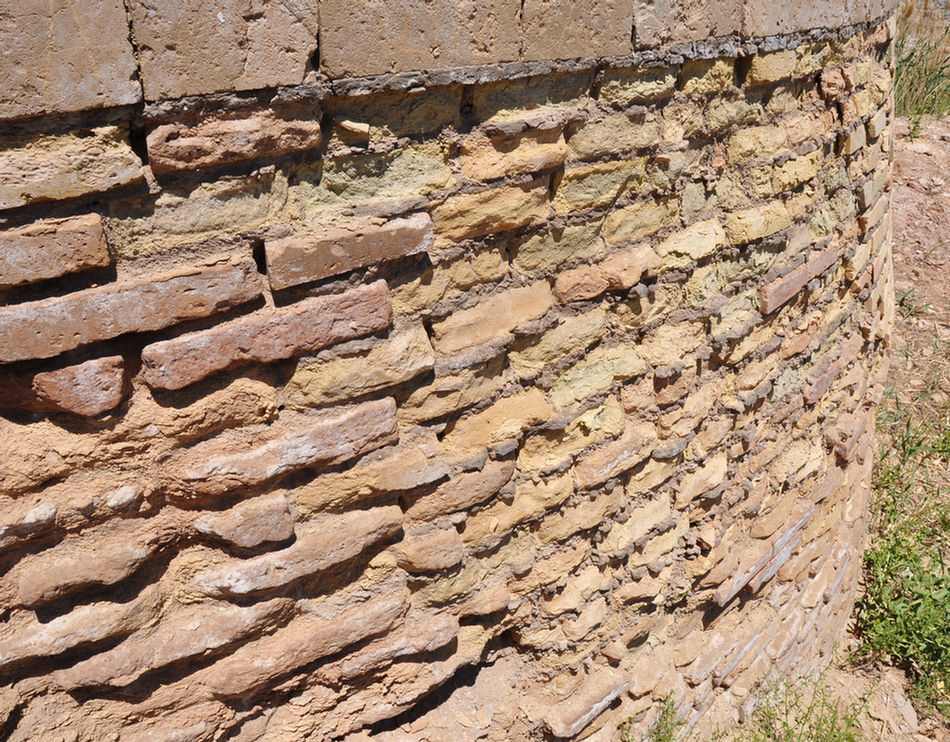
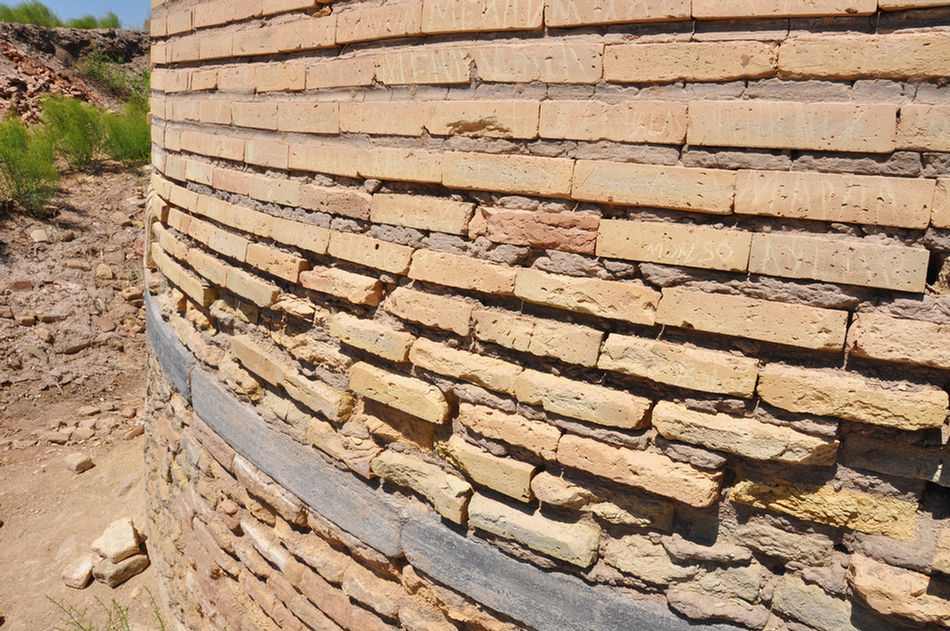
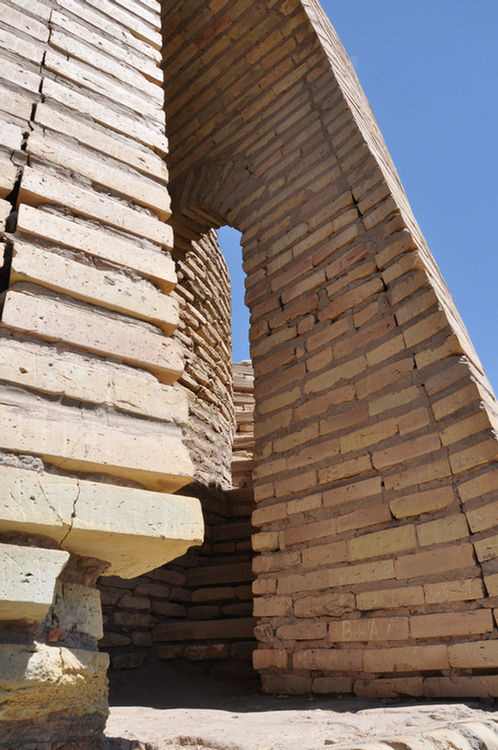
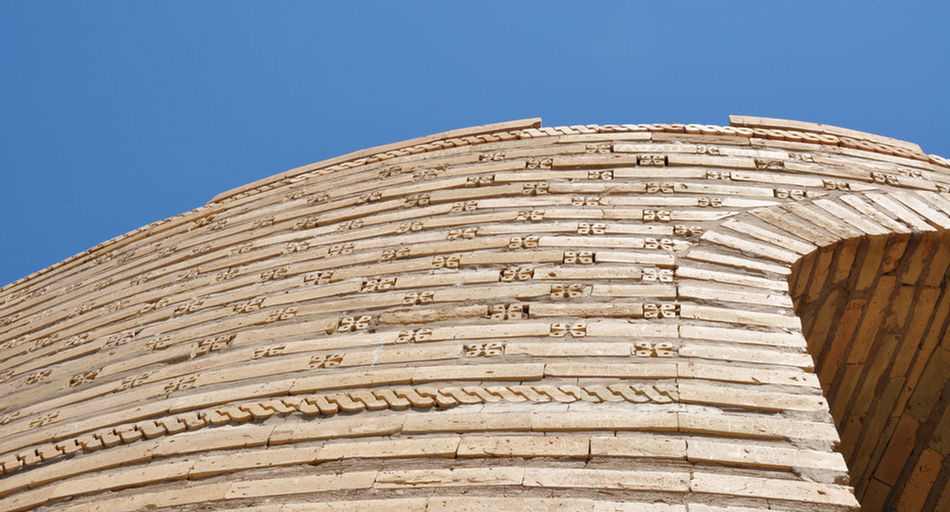
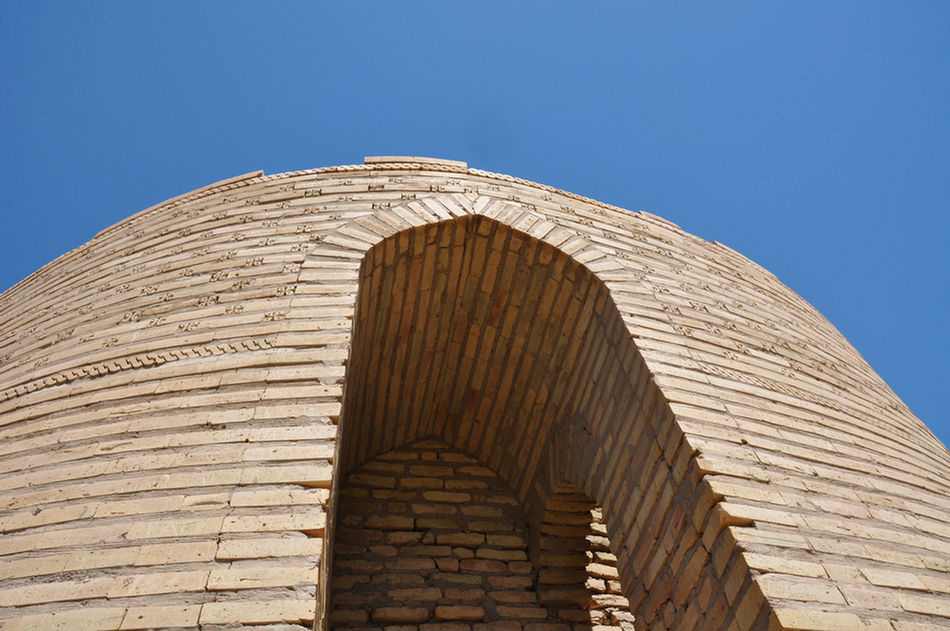
The portal of an unknown building.
Our guide, Rustam, said that it was once a caravan serai.
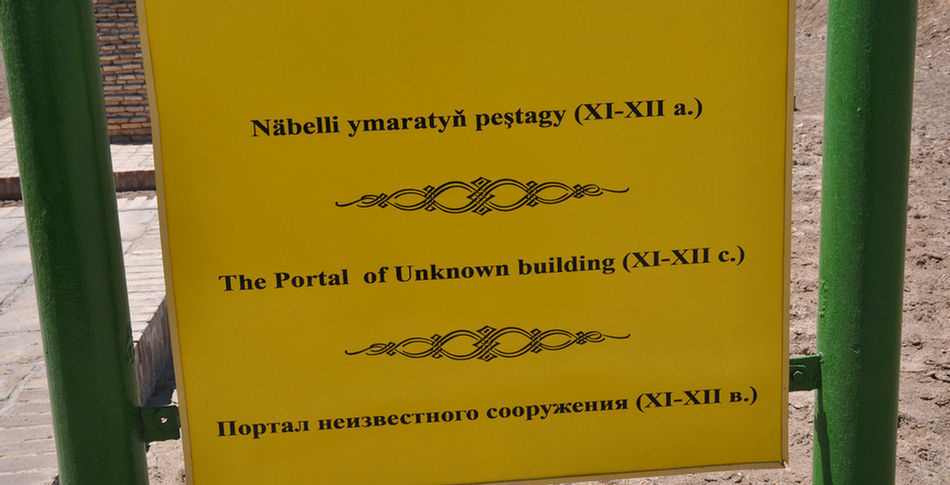
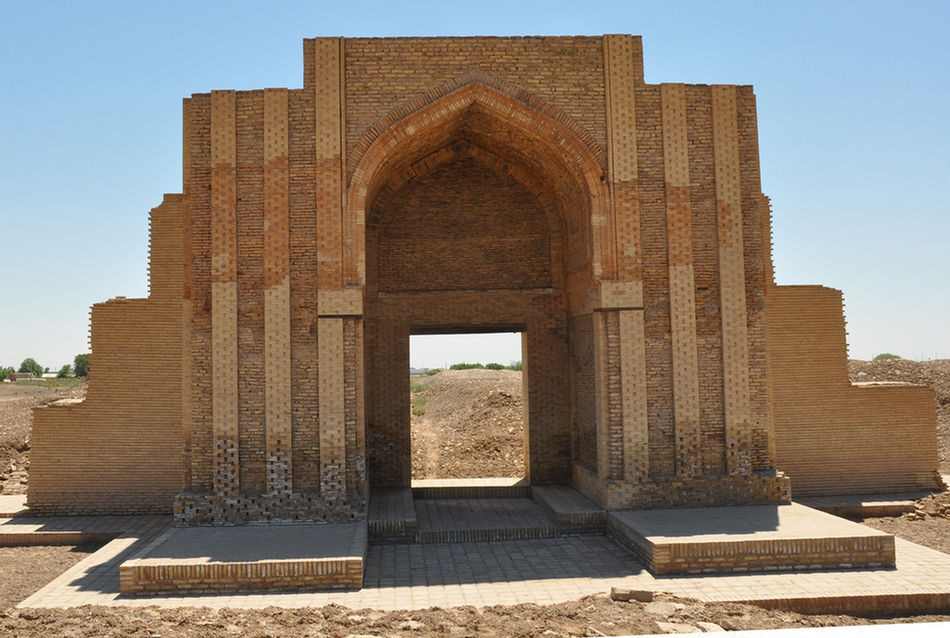
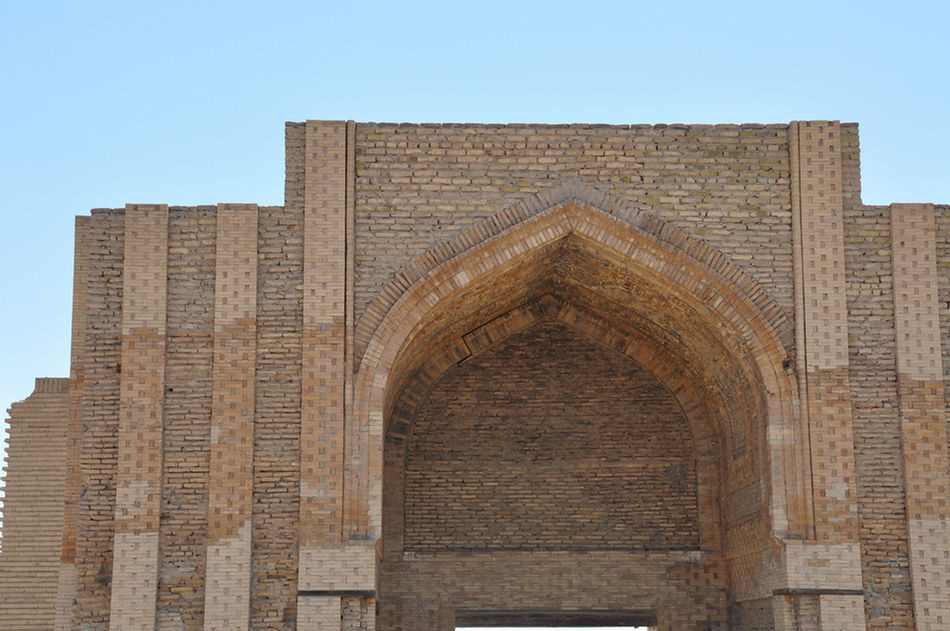
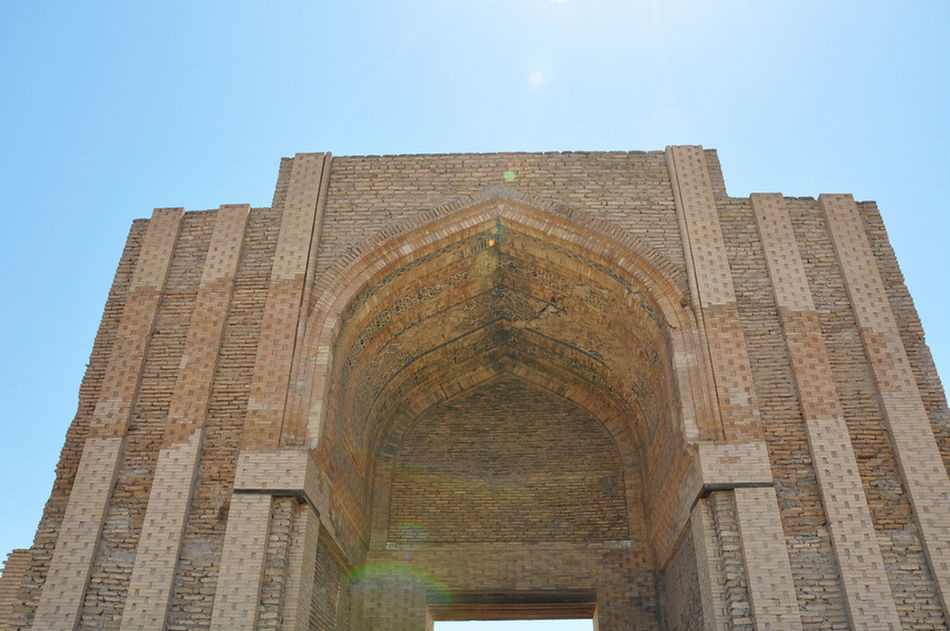
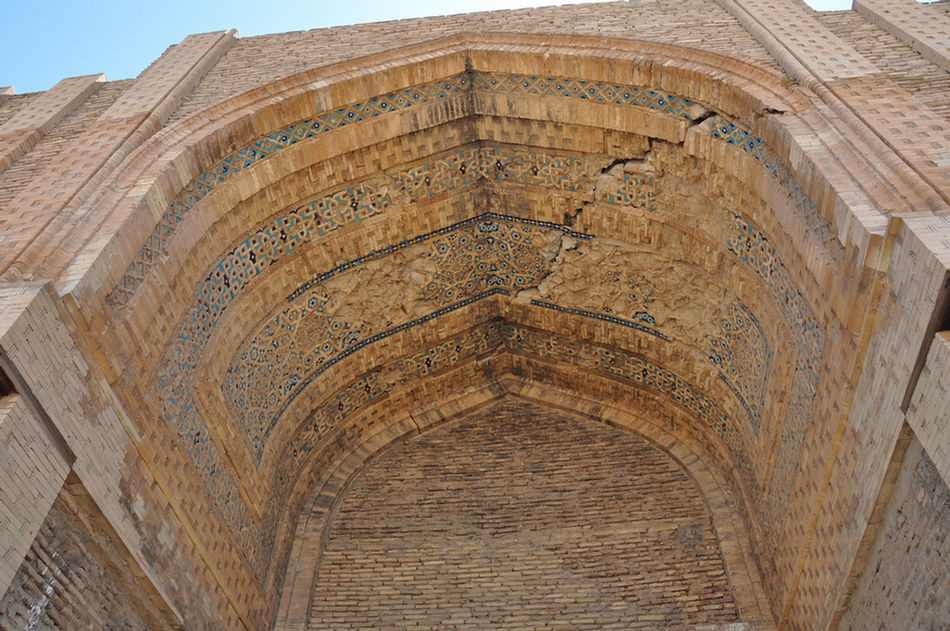
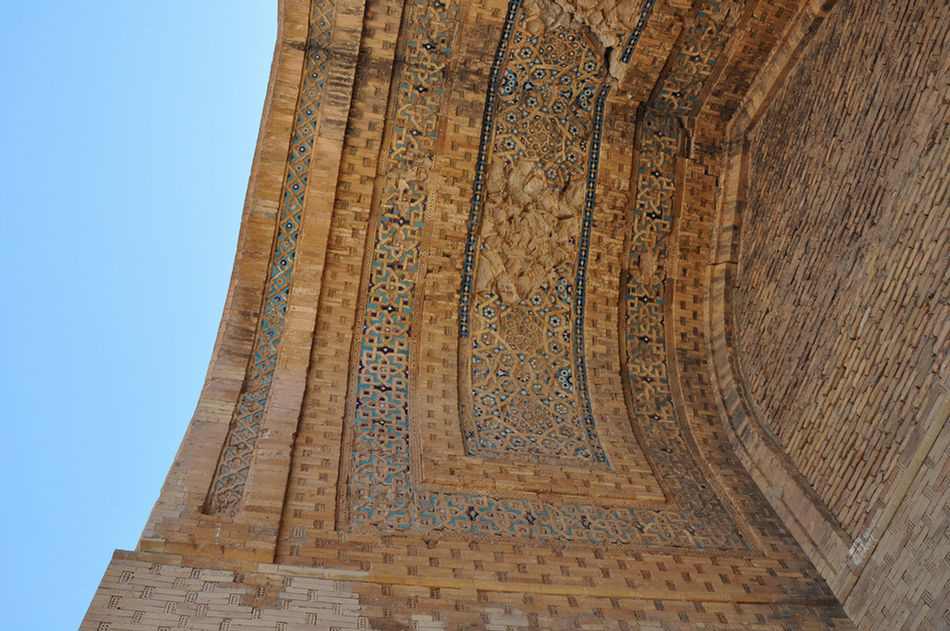
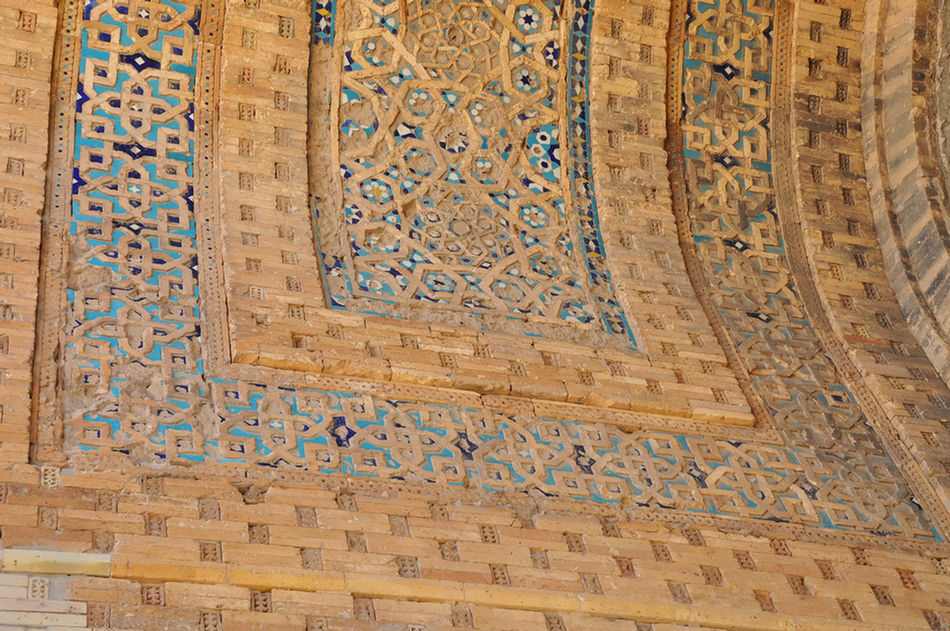
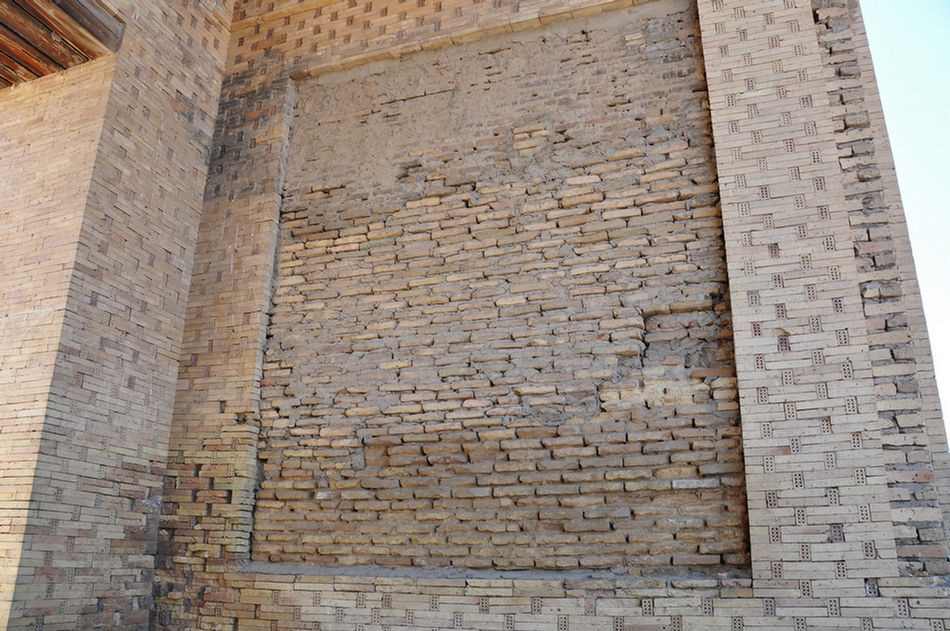
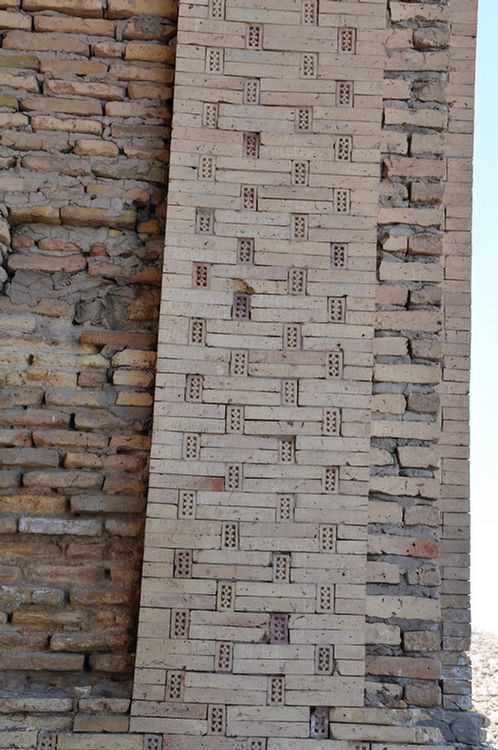
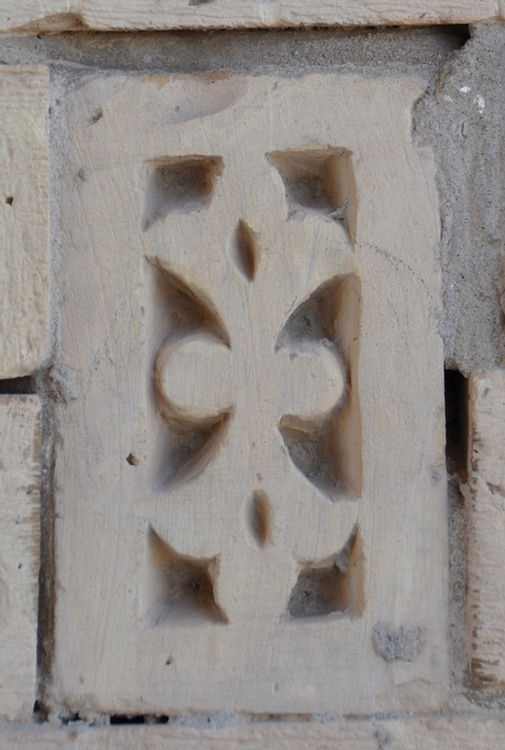
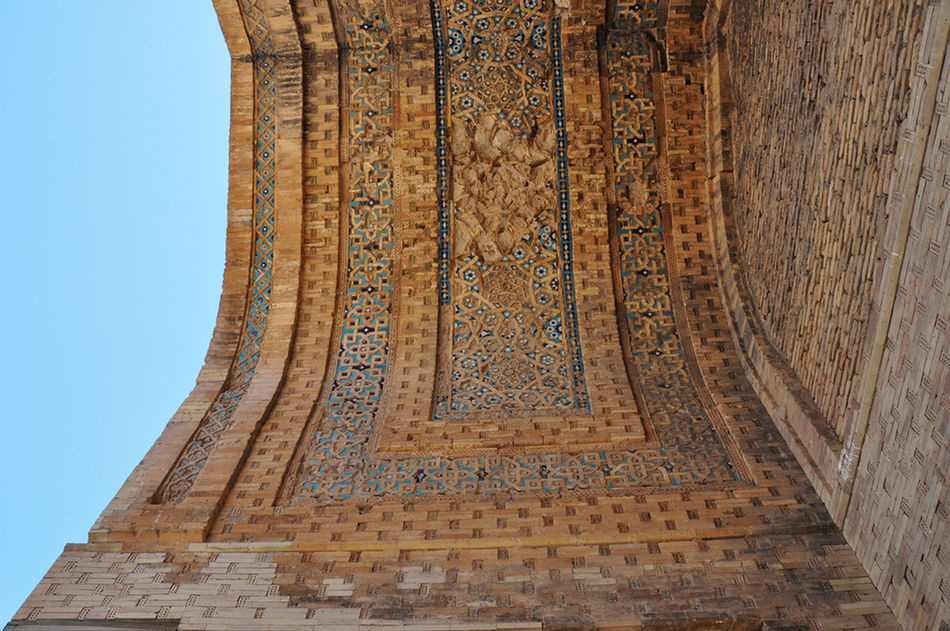
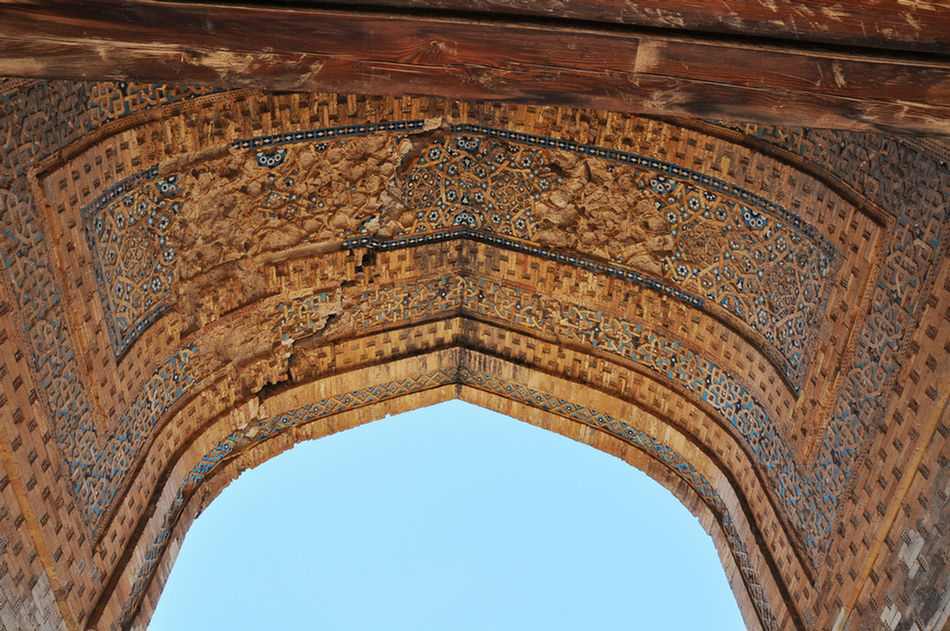
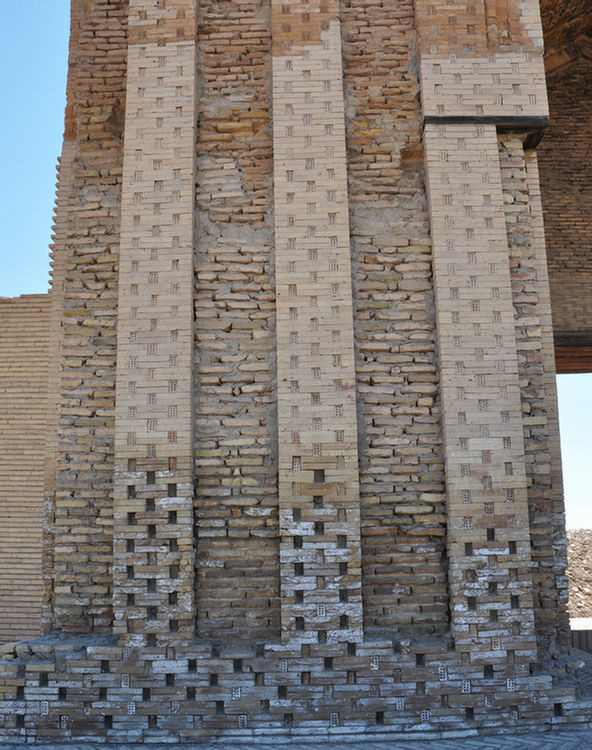

Then we drove to another ancient complex.
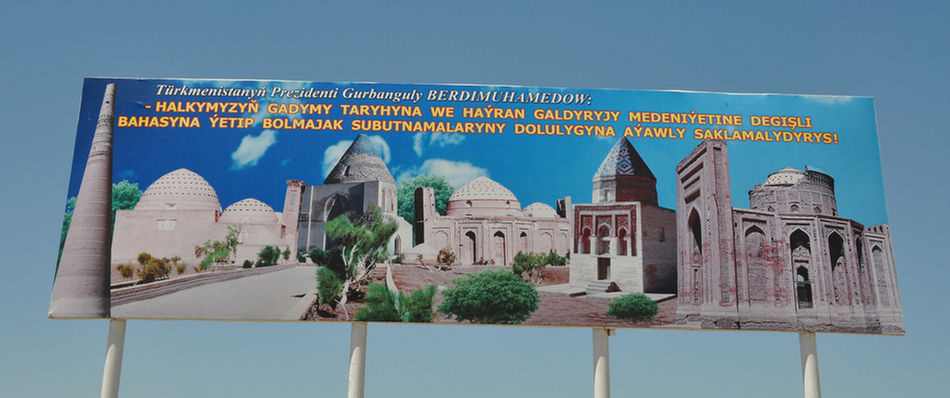
Nejameddin Kubra Mausoleum is on the left and Sultan ali Mausoleum is on the right.
Nejameddin Kubra (1145-1221) was a famous Khorezm Isalmic teacher and poet who founded
the Sufic Kubra order with followers throughout the Islamic world.
The buildings appear on the brink of foward collapse.
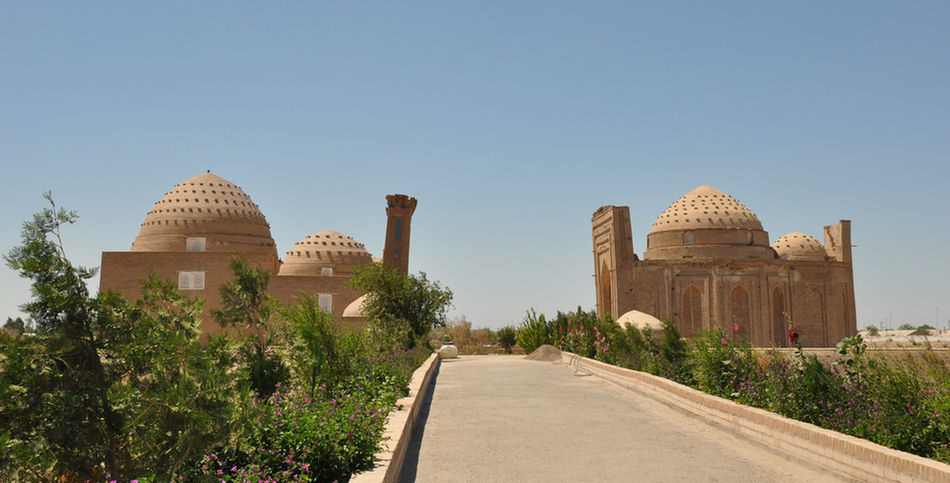
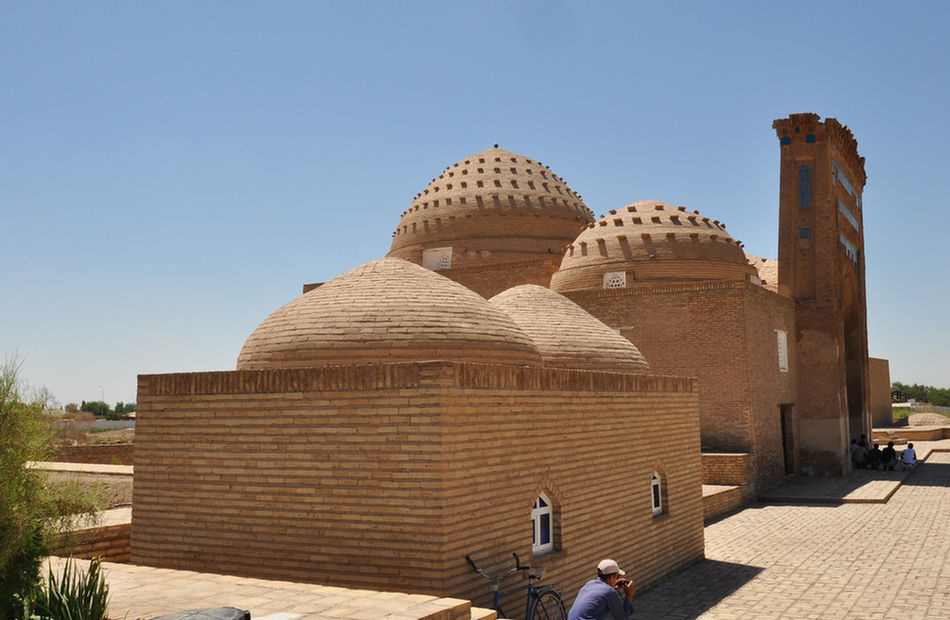
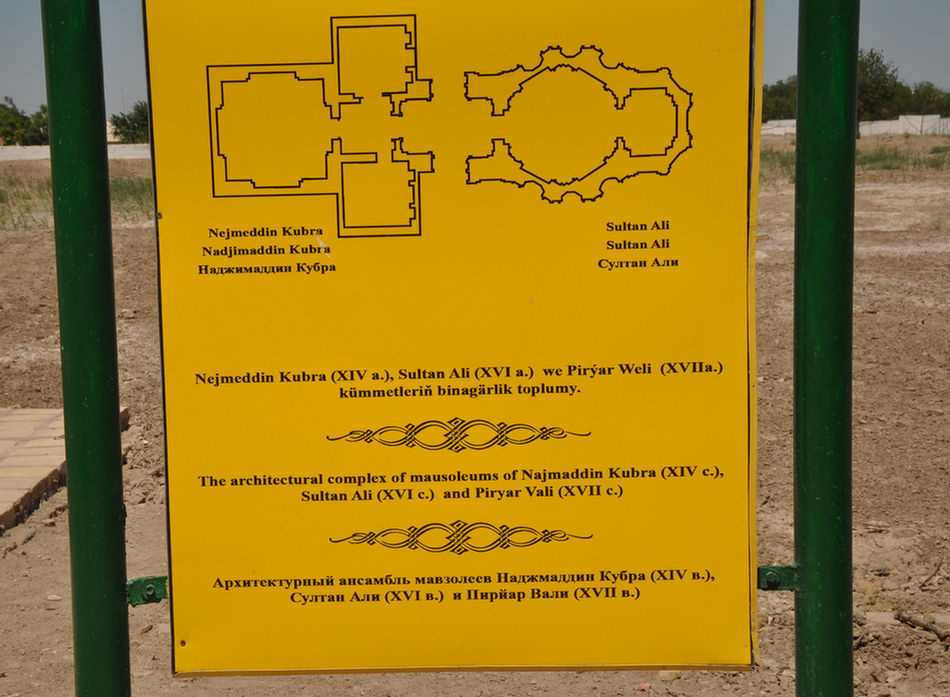
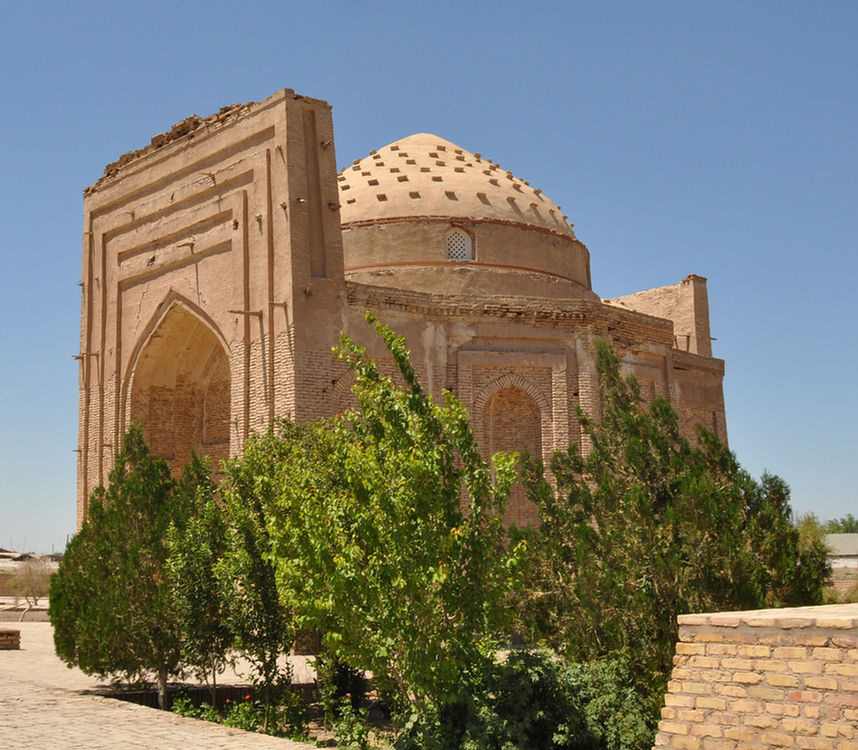


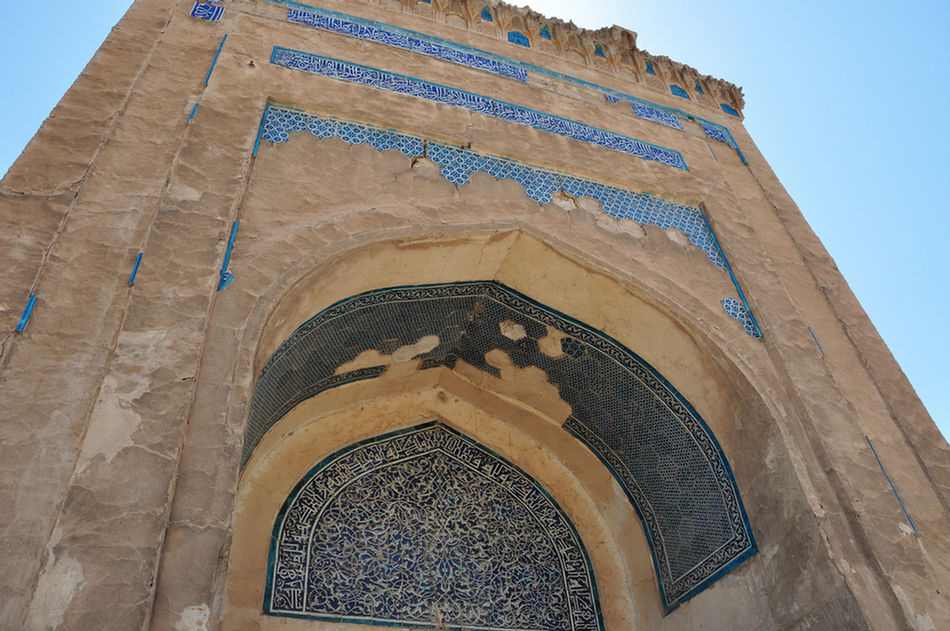
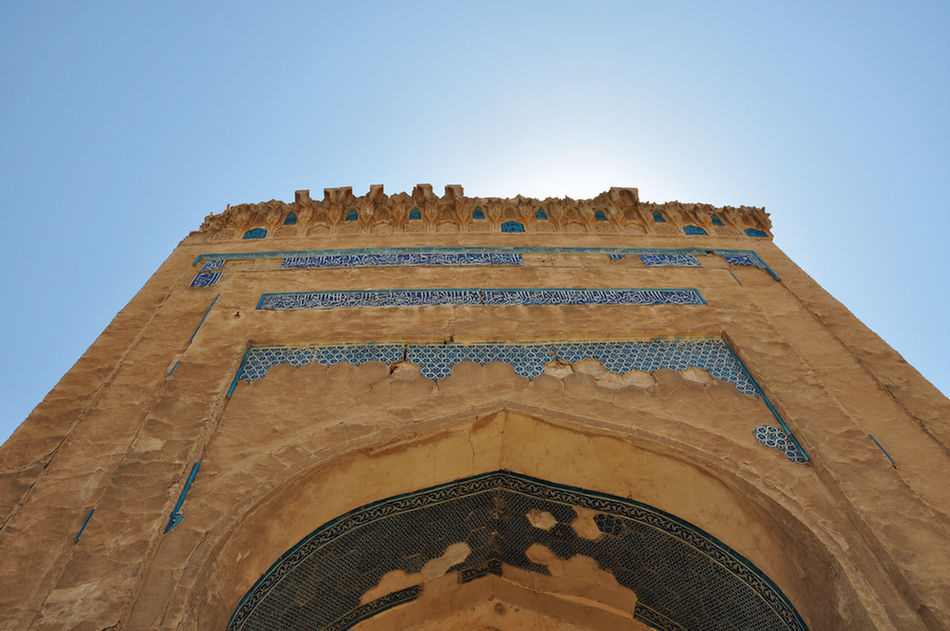
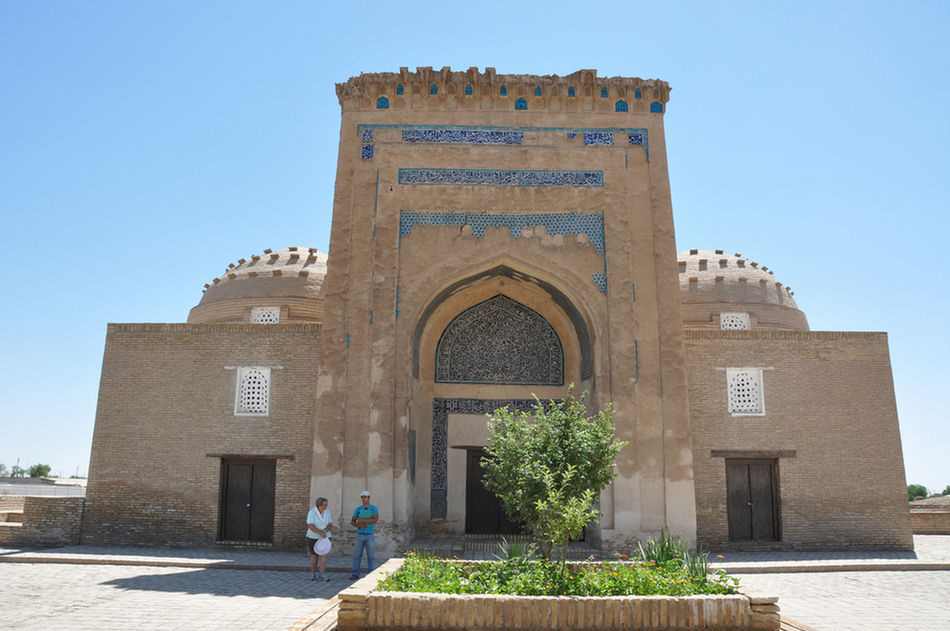
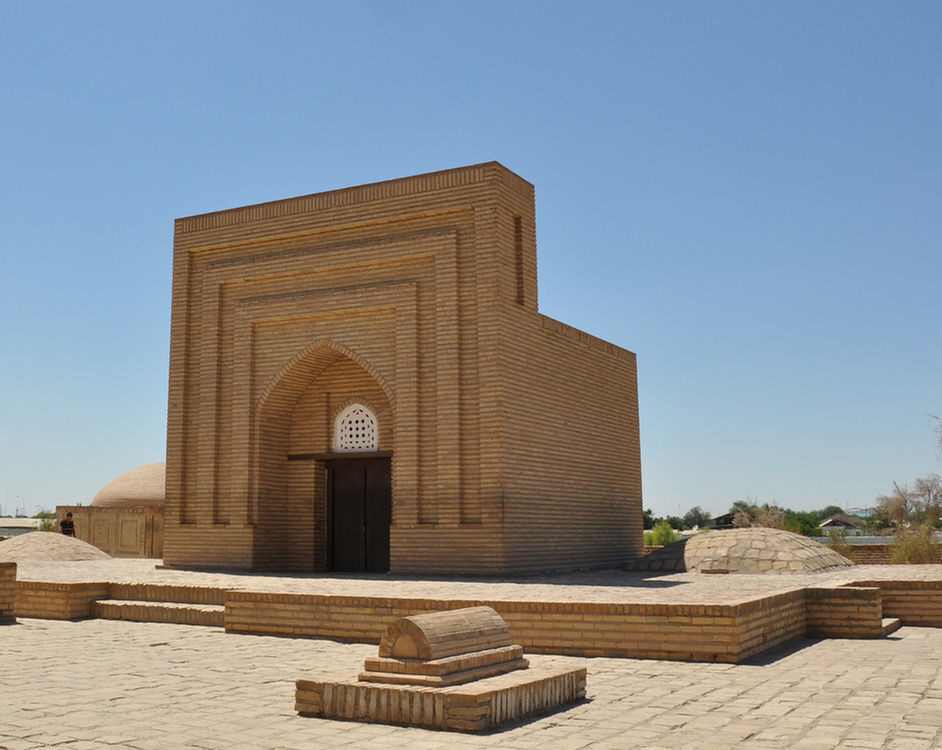
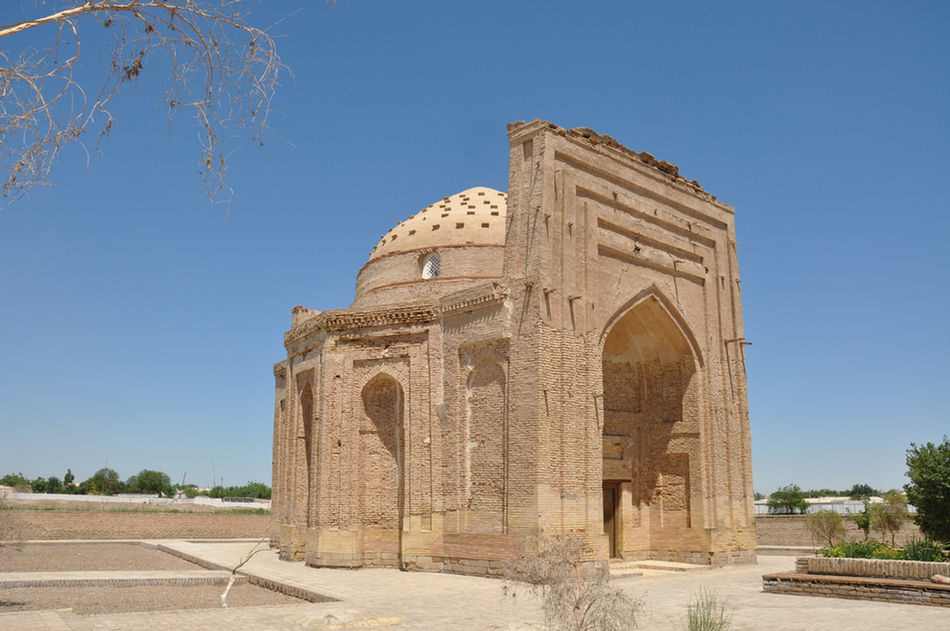
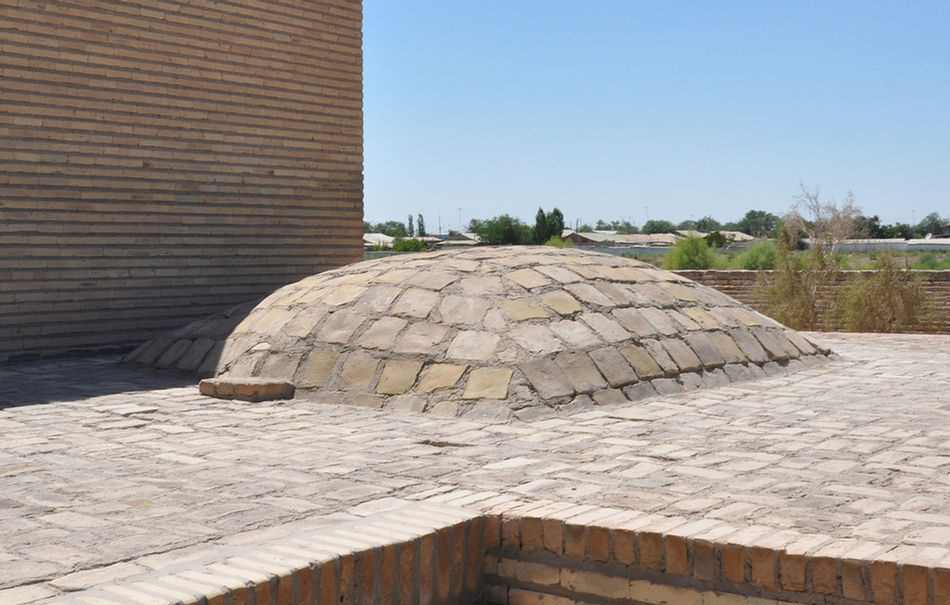
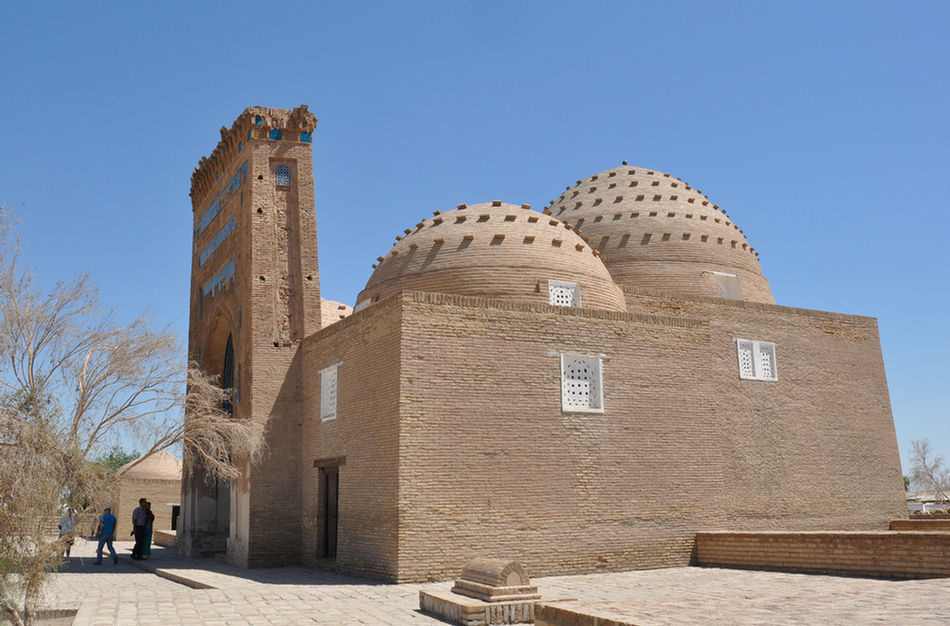
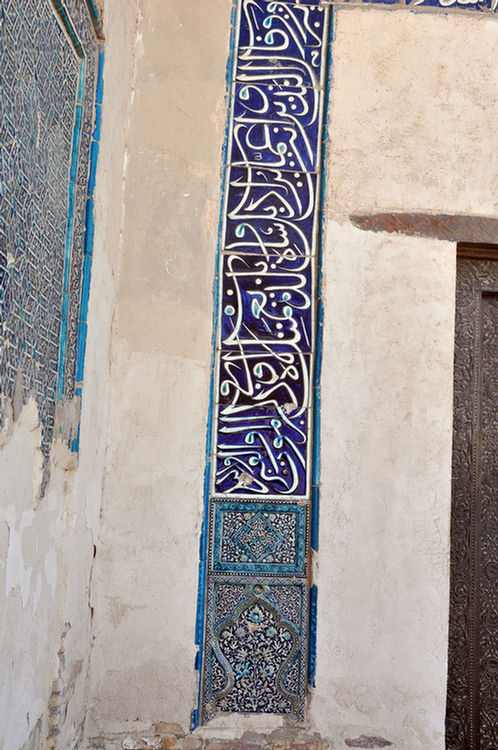
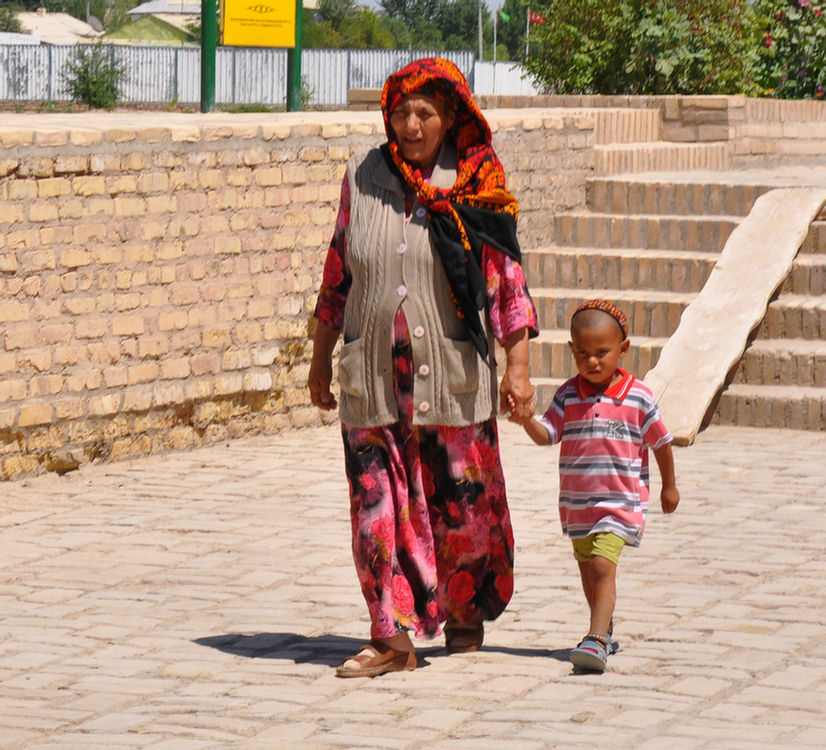
We had lunch at a local restaurant - salad kossta and rice.
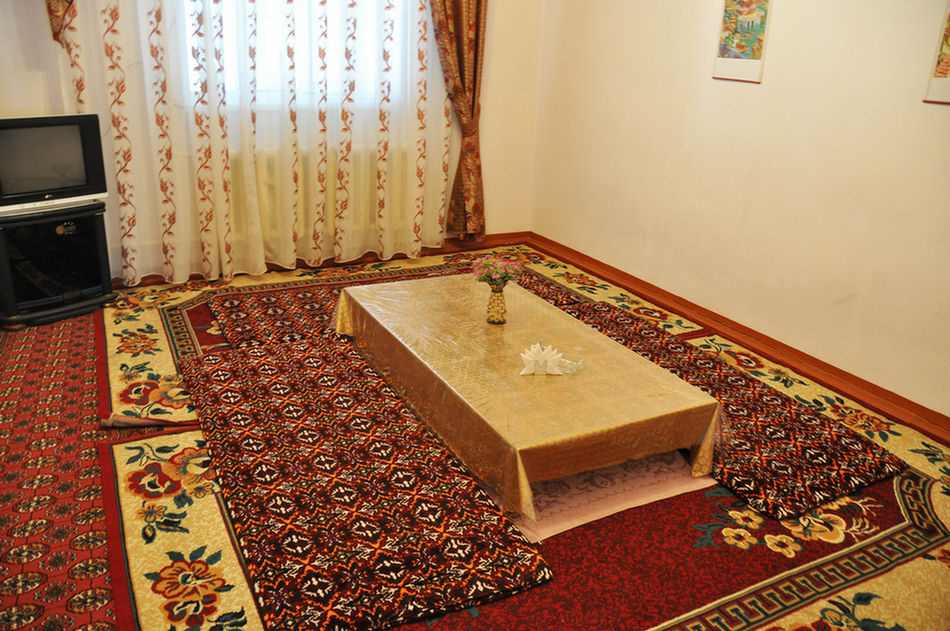
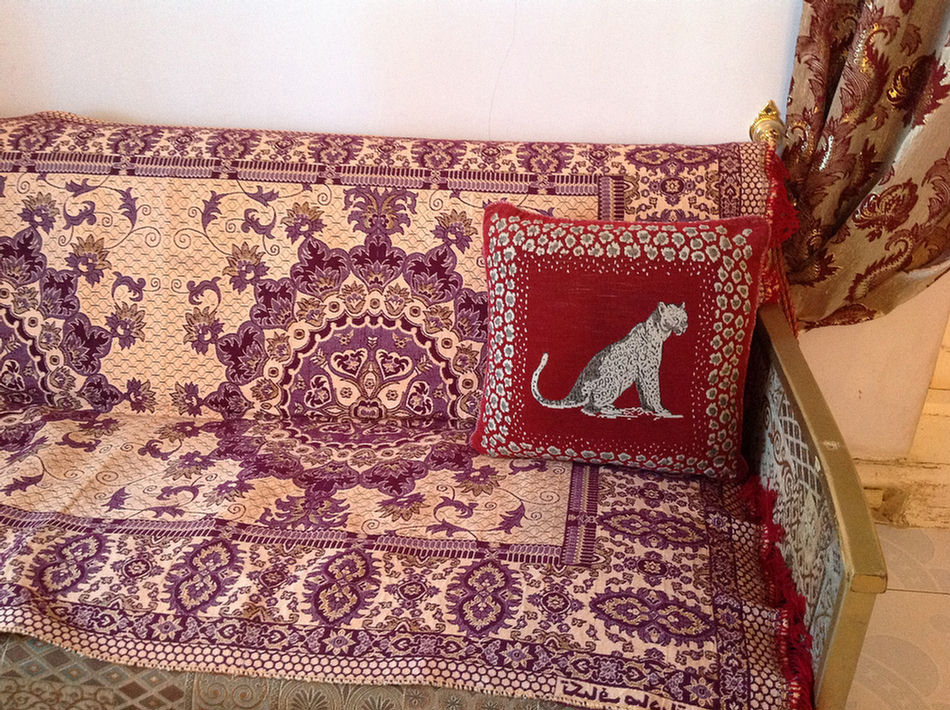
We had a look around a nearby market.
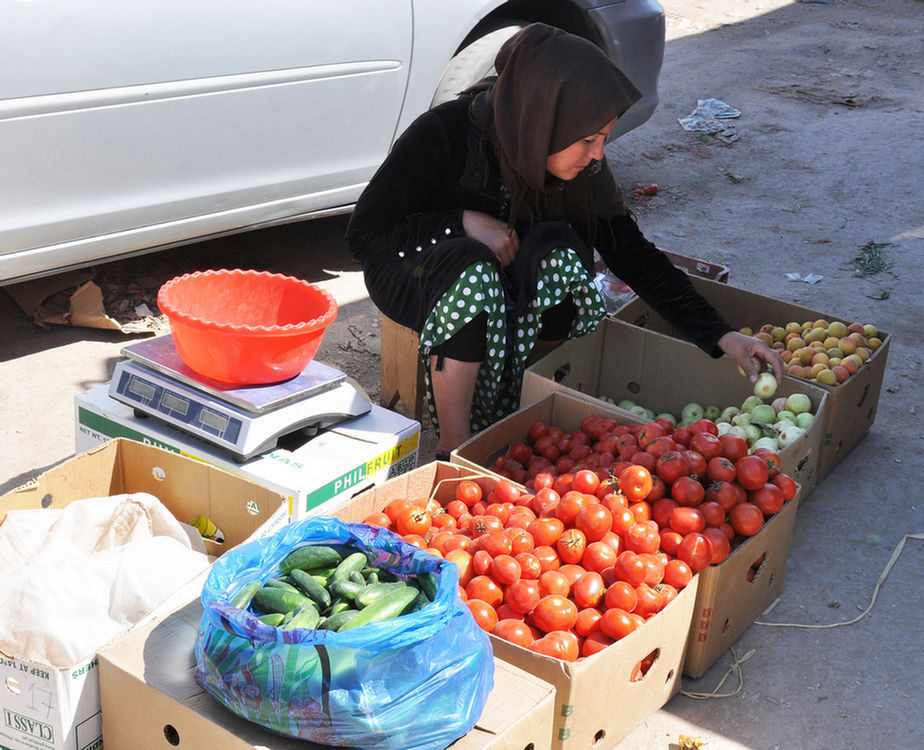

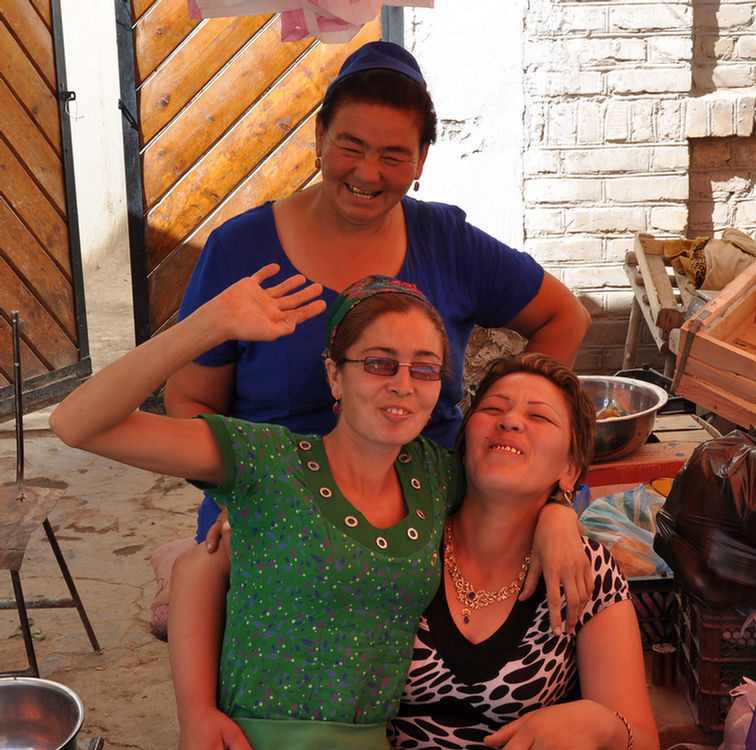

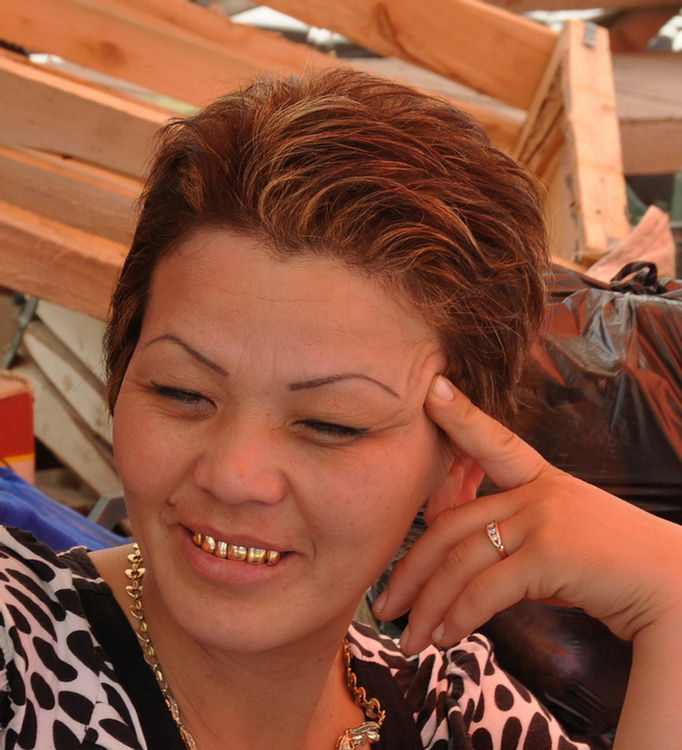
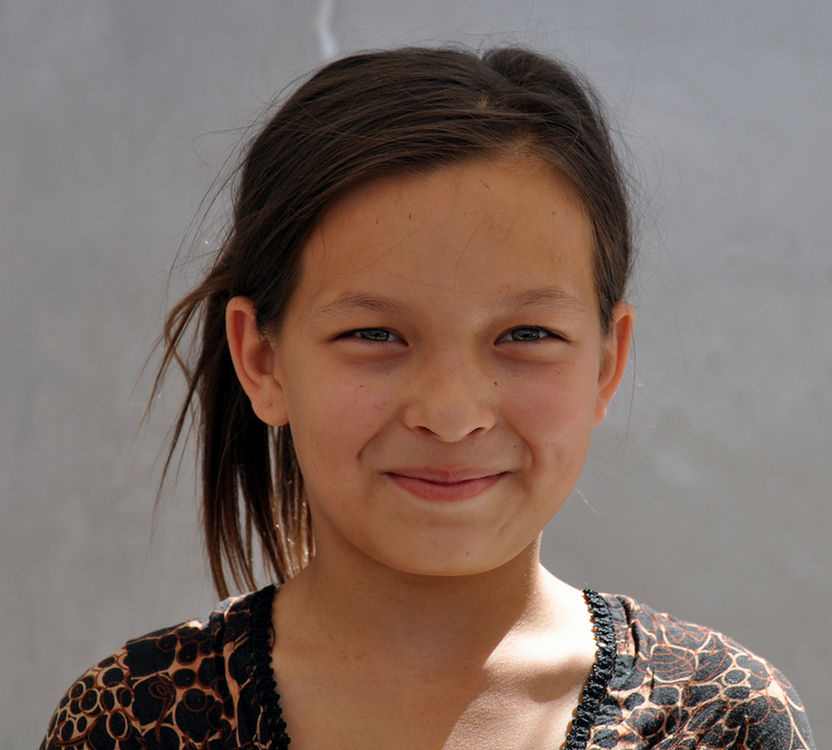
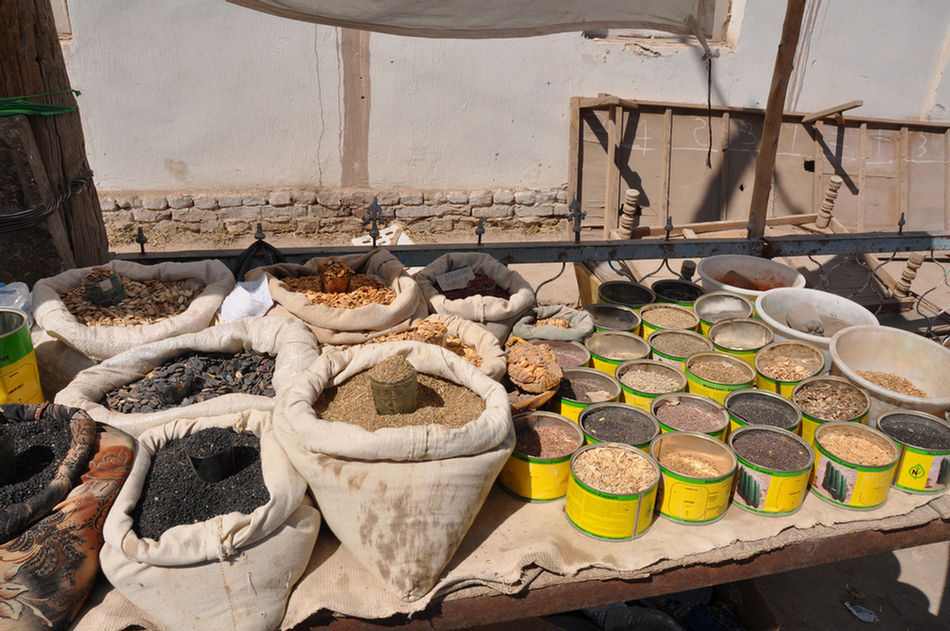
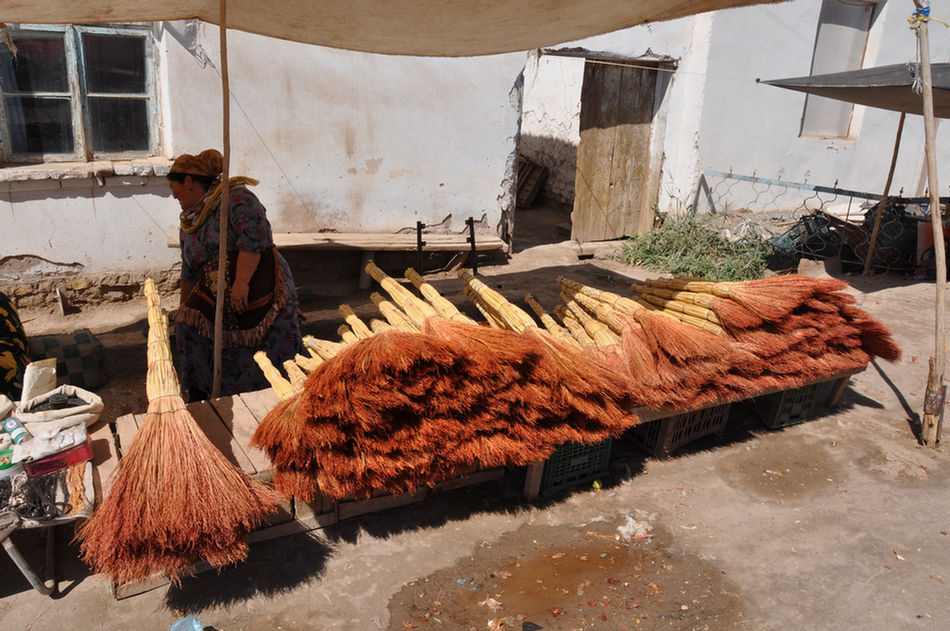
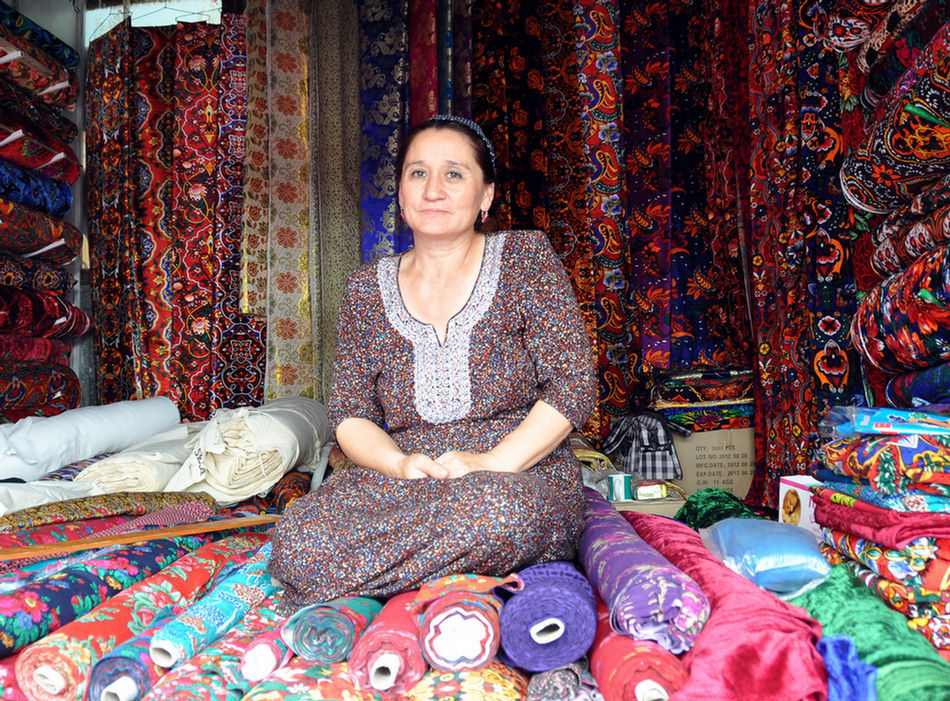
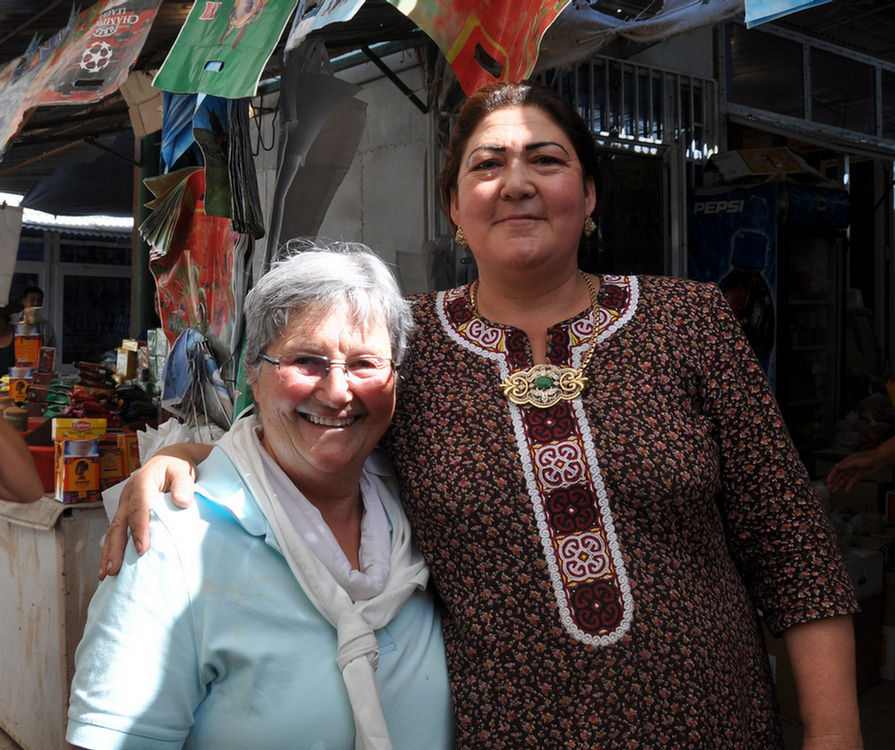
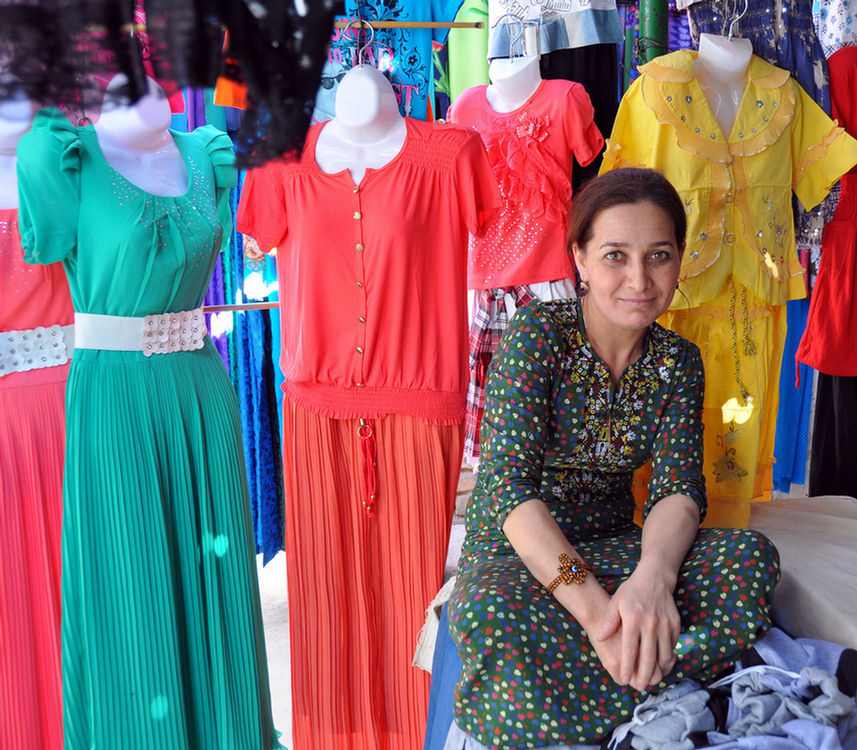

The nearest city to Konye and Urgench is Dashogus. from there we had a 45 minute flight to Asgabat, the capital of Turkmenistan.
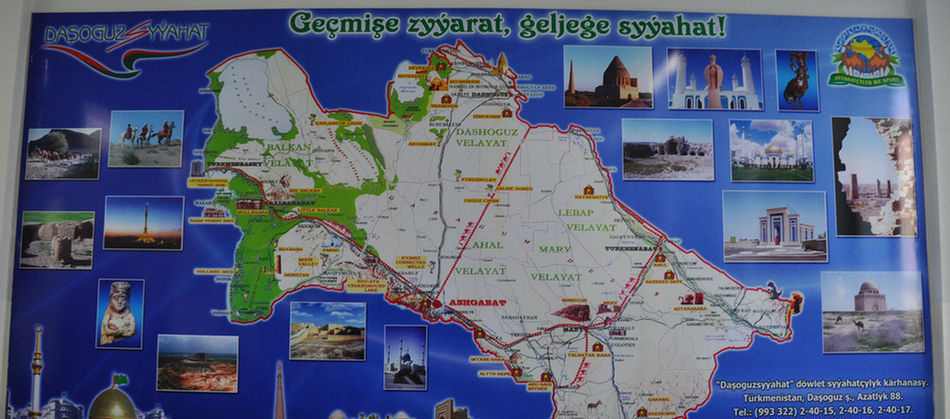
In May 2013 we went on a 33-day, "5-Stans", Central Asia tour.
(Melbourne - Kuala Lumpur - Kazakhstan - Kyrzgystan - Uzbekistan - Tajikistan - Turkmenistan - Dubai - Melbourne)
Turkmenistan was the last of the "5-Stans" on this tour.
It took about an hour to travel from Khiva in Uzbekistan to the Turkmenistan border.
We said goodbye to Rustum, our guide in Uzbekistan.
An Italian couple and their daughter were crossing also. Their guide helped to expedite our exit from Uzbekistan.
The Uzbek border guards are very concerned about what money you take in and out of the country.
Then it was about a kilometre in a very crowded van to the Turkmenistan gate.
Fortunately, our Turkmenistan guide, Rustum (yes, another Rustum) met us.
He already had our entry forms filled out and was able to epedite our entry.
Even so the whole border crossings took about 2 hours.
We had about a 90-minute through the Kara-Kum desert to Konye-Urgench.

The 12th and early 13th centuries were the golden age of Urgench,
it became the capital of Khorezm Empire and surpassed in population and fame all other Central Asian cities barring Bukhara.
The ancient city of Urgench was one of the great Silk Road cities and was the centre of the Islamic world until
Mohammed II moved his capital to Samarkand after capturing the city in 1210.
Gengis Khan arrived in 1222 seeking revenge for the murder of his envoys in Otrar.
He diverted the Amu Darya river, eventually flooding the city and drowning the inhabitants.
The city was revived after Genghis's assault, but the sudden change of Amu-Darya's course to the north
and the town's destruction again in the 1388, this time by Timur, forced the inhabitants to leave the site forever.
Timur considered the city to be a rival of Samarkand.

The remains of the Mausoleum of Turabek Khanum.
This was considered to be one of Asia's most perfect buildings.
It had 365 sections on the sparkling mosaic on the underside of the dome,
24 pointed arches, 12 bigger arches and 4 big windows.


















The 19th century Sayid Ahmed Mausoleum was across the road.










Kutlug Timur minaret.
Completed in the 1320's, it is 68 metres high.
It leans noticably and is the only surviving part of old Urgench's main mosque.

While it appears unattractive from a distance, it is built with intricate brickwork.





Sultan Tekesk Mausoleum.
Tekesh was the 12th century Khorezm Shah who made Khorezm great with conquests
as far as present day northern Iranand northern Afghanistan.





Alow Pir mausoleum.



Kyrk Molla hill ( 40 Mullahs hill).
This is a sacred place where Konye-Urgench's inhabitants held their last stand against Genghis Khan's Mongols.
Young women roll down the hill as a fertility rite, hoping their wishes come true.

We did see some young women walking round and round a pole.




Il-Arslan Mausoleum.
Its conical dome with its 12 faces is unique.








Mamuu II minaret.

It was built in 1011, reduced to a stump by the Mongols in 1221, rebuilt in the 14th century
and finally toppled by an earthquake in 1895.







The portal of an unknown building.
Our guide, Rustam, said that it was once a caravan serai.














Then we drove to another ancient complex.

Nejameddin Kubra Mausoleum is on the left and Sultan ali Mausoleum is on the right.
Nejameddin Kubra (1145-1221) was a famous Khorezm Isalmic teacher and poet who founded
the Sufic Kubra order with followers throughout the Islamic world.
The buildings appear on the brink of foward collapse.















We had lunch at a local restaurant - salad kossta and rice.


We had a look around a nearby market.












The nearest city to Konye and Urgench is Dashogus. from there we had a 45 minute flight to Asgabat, the capital of Turkmenistan.
